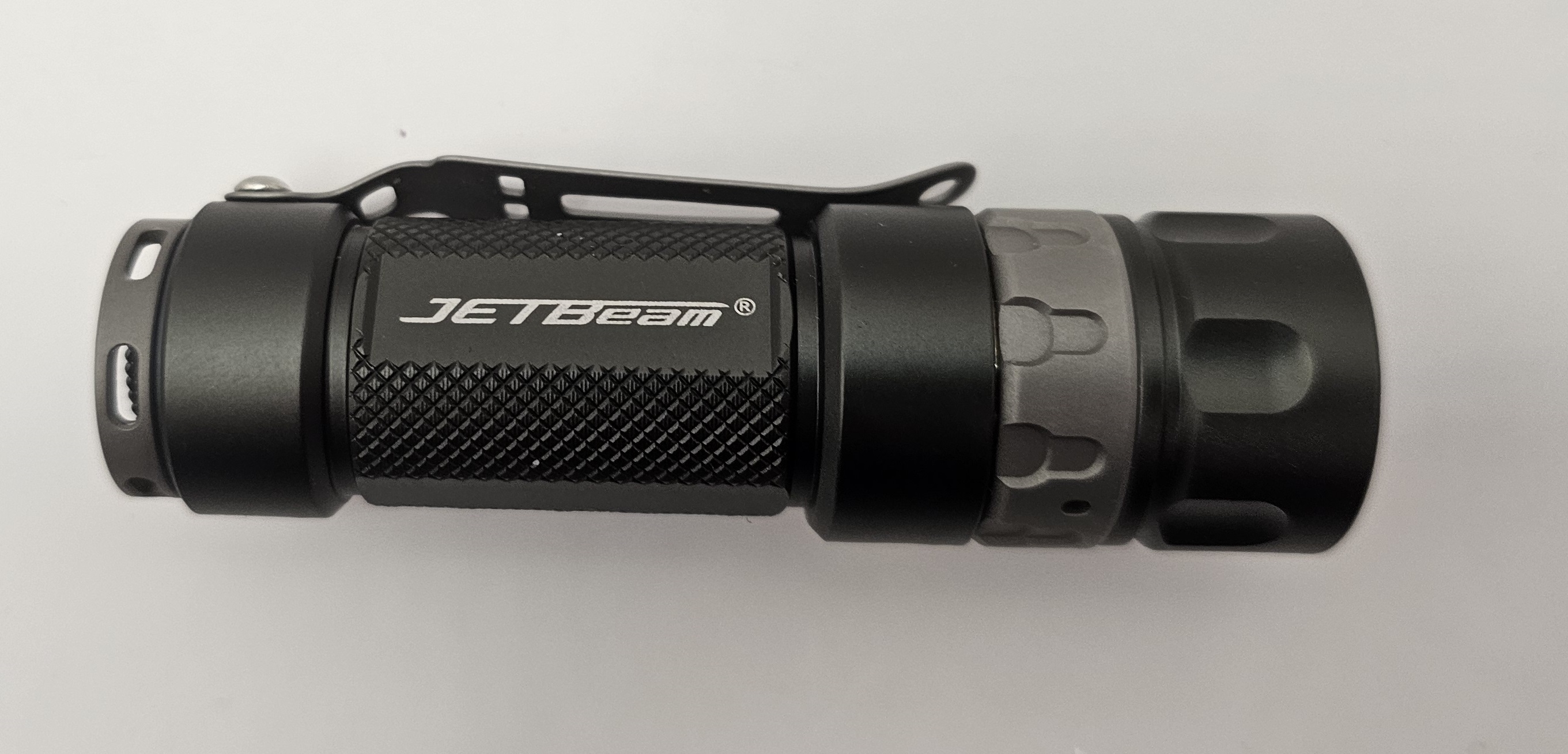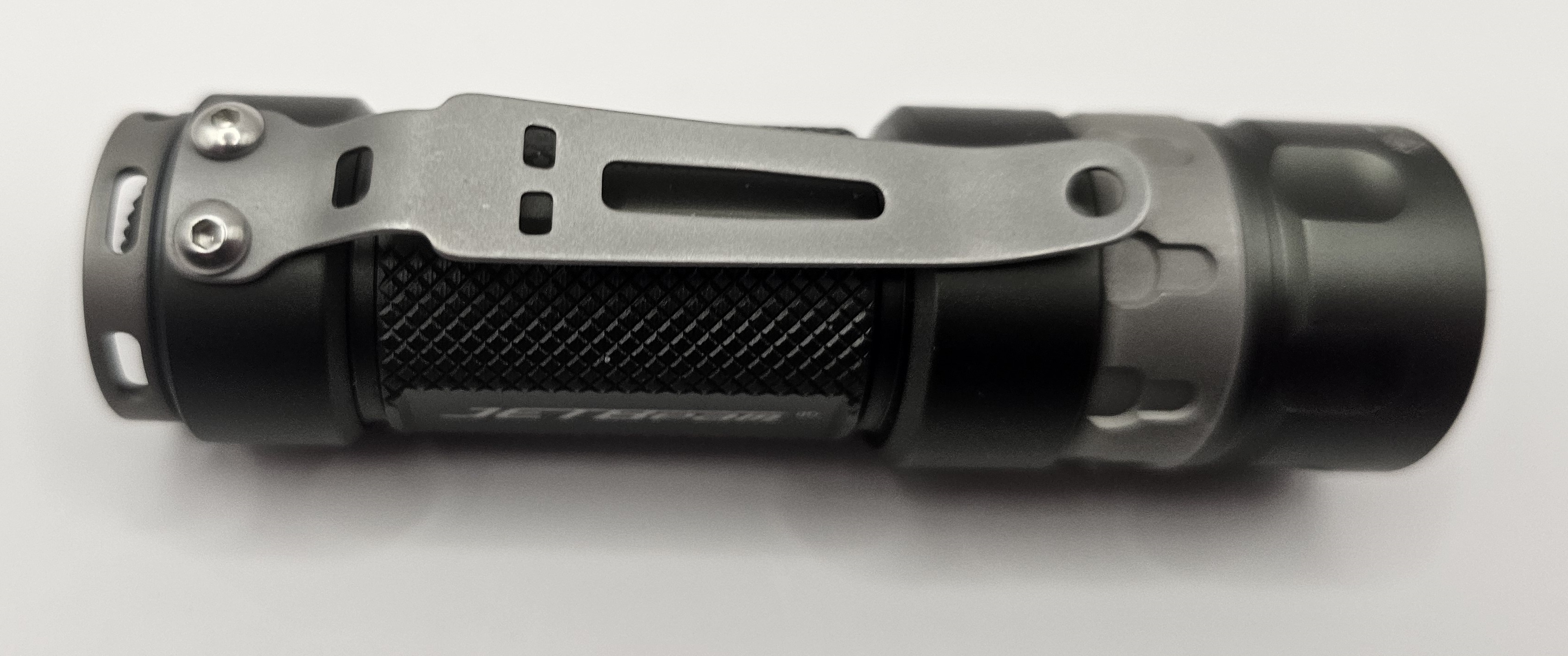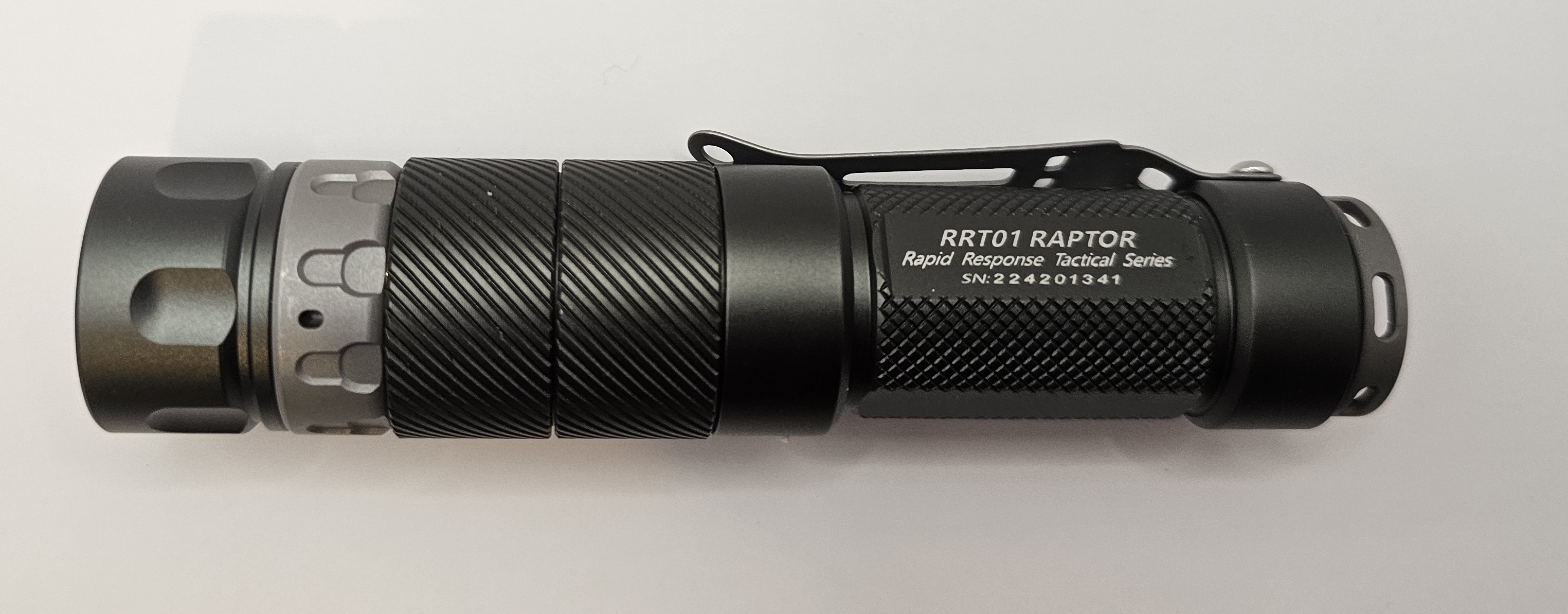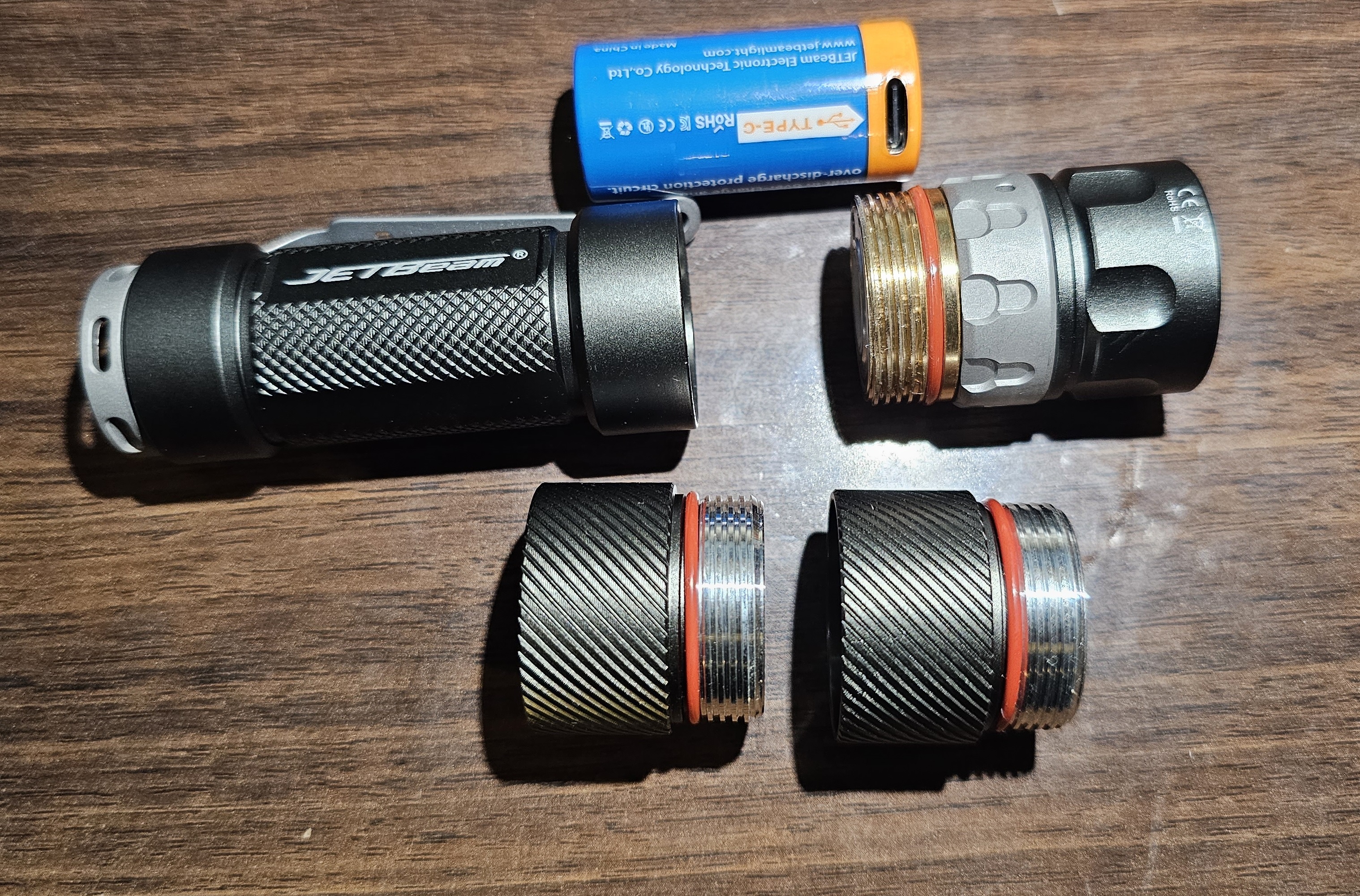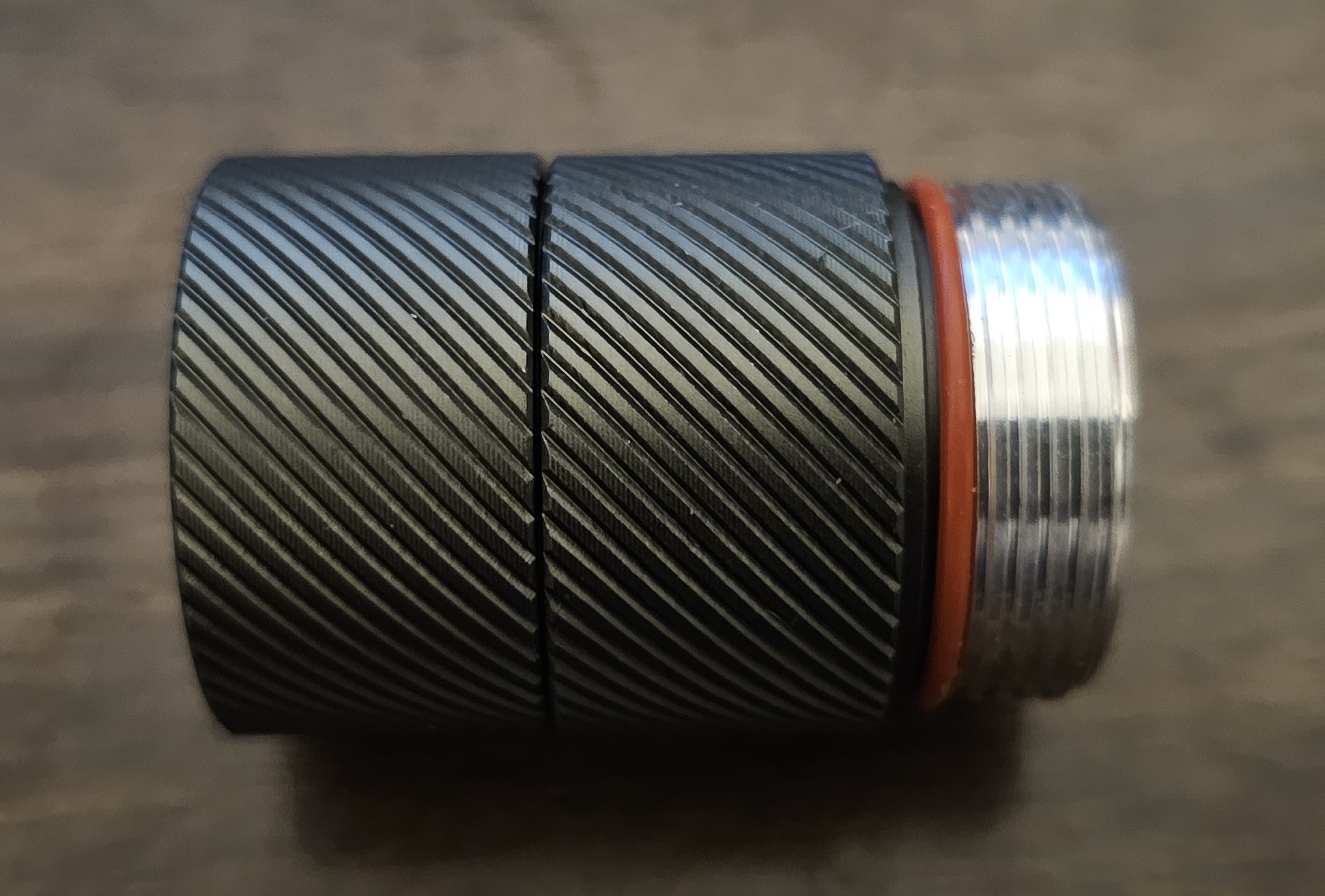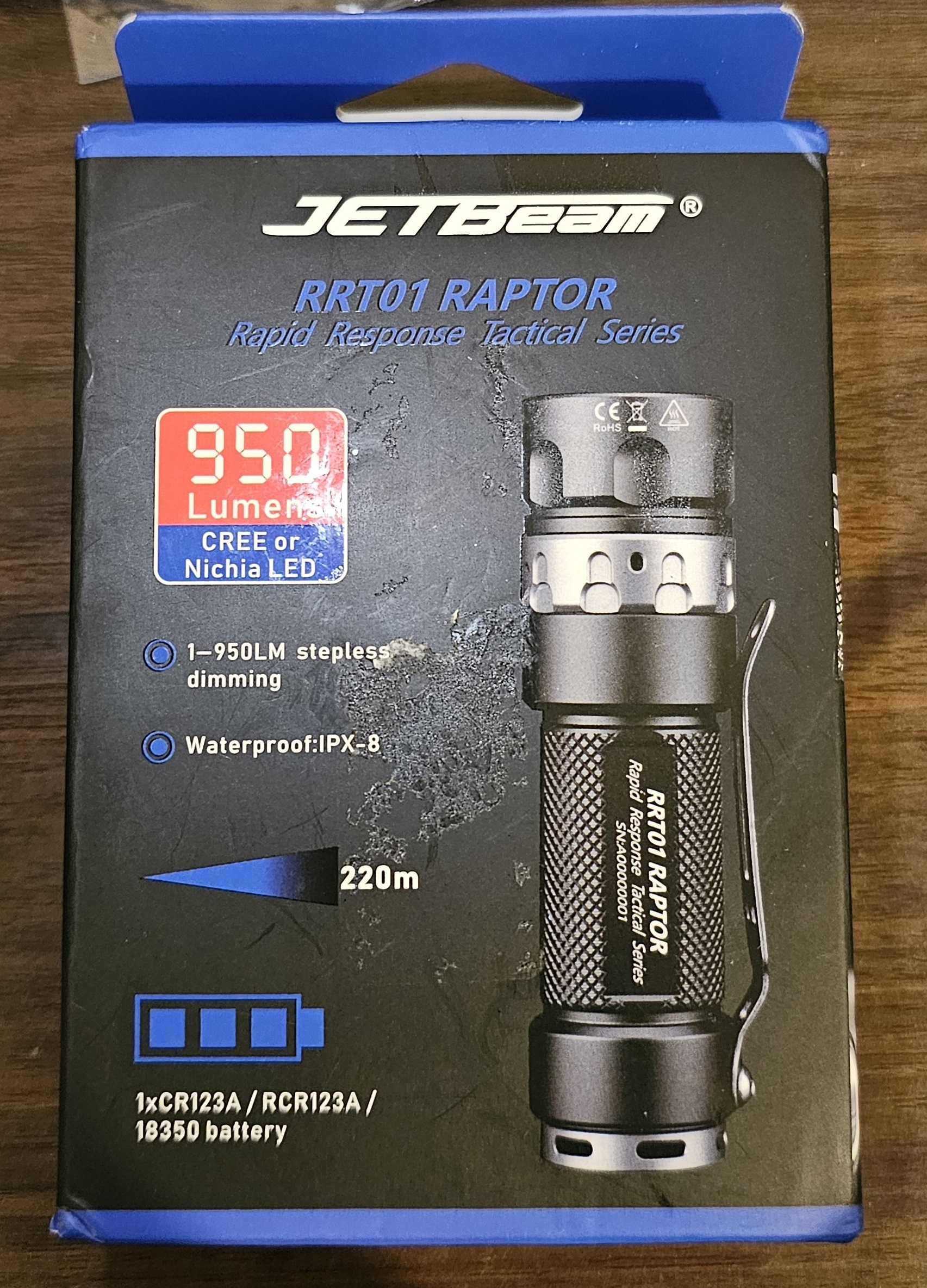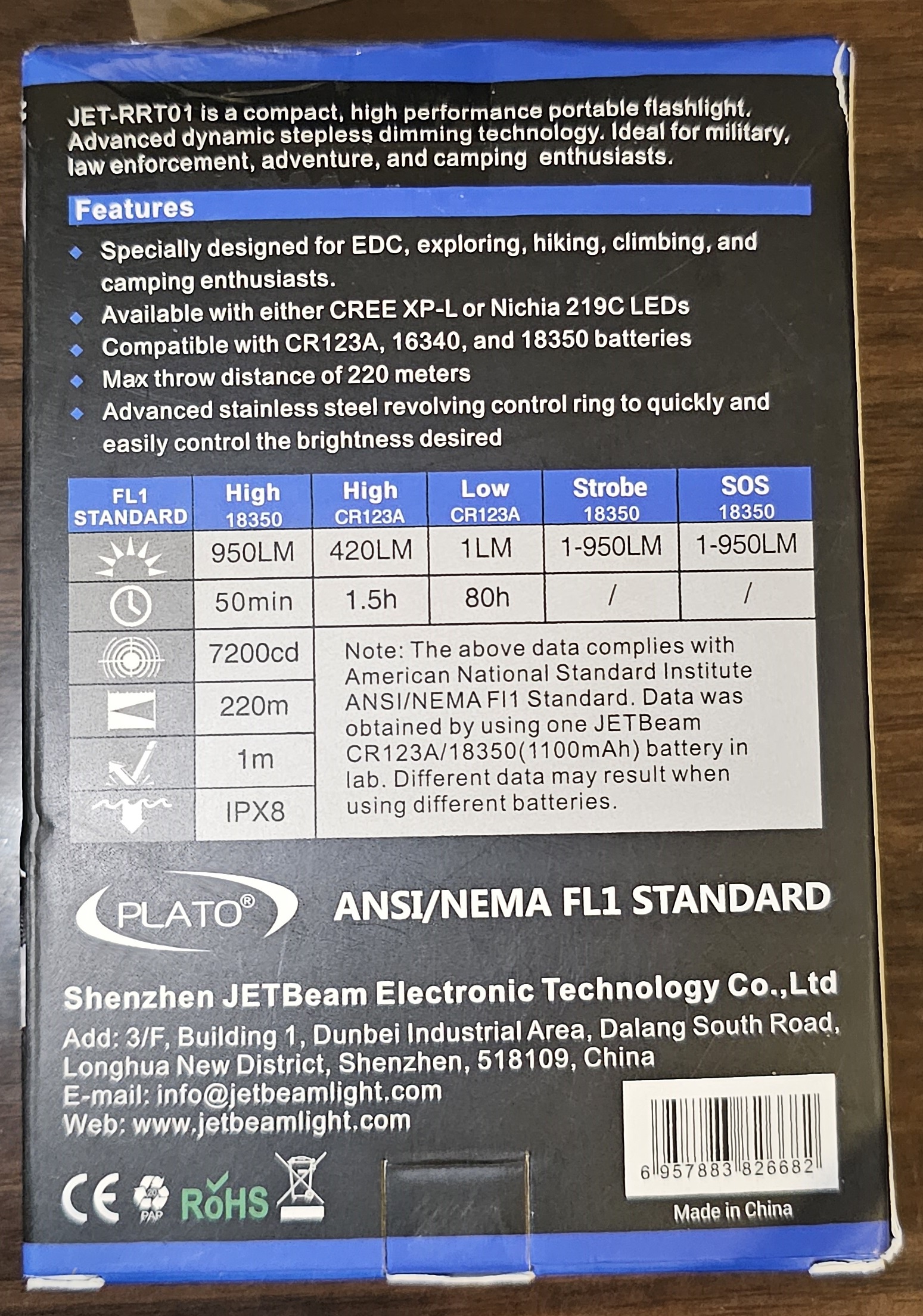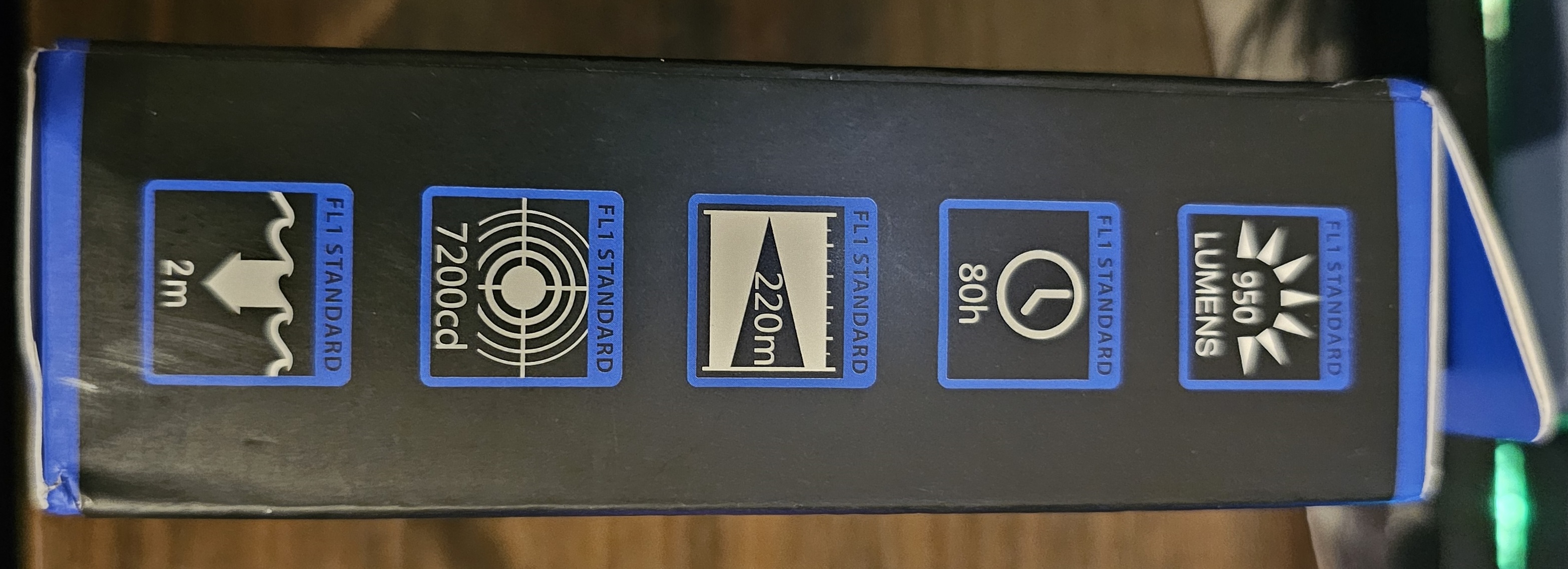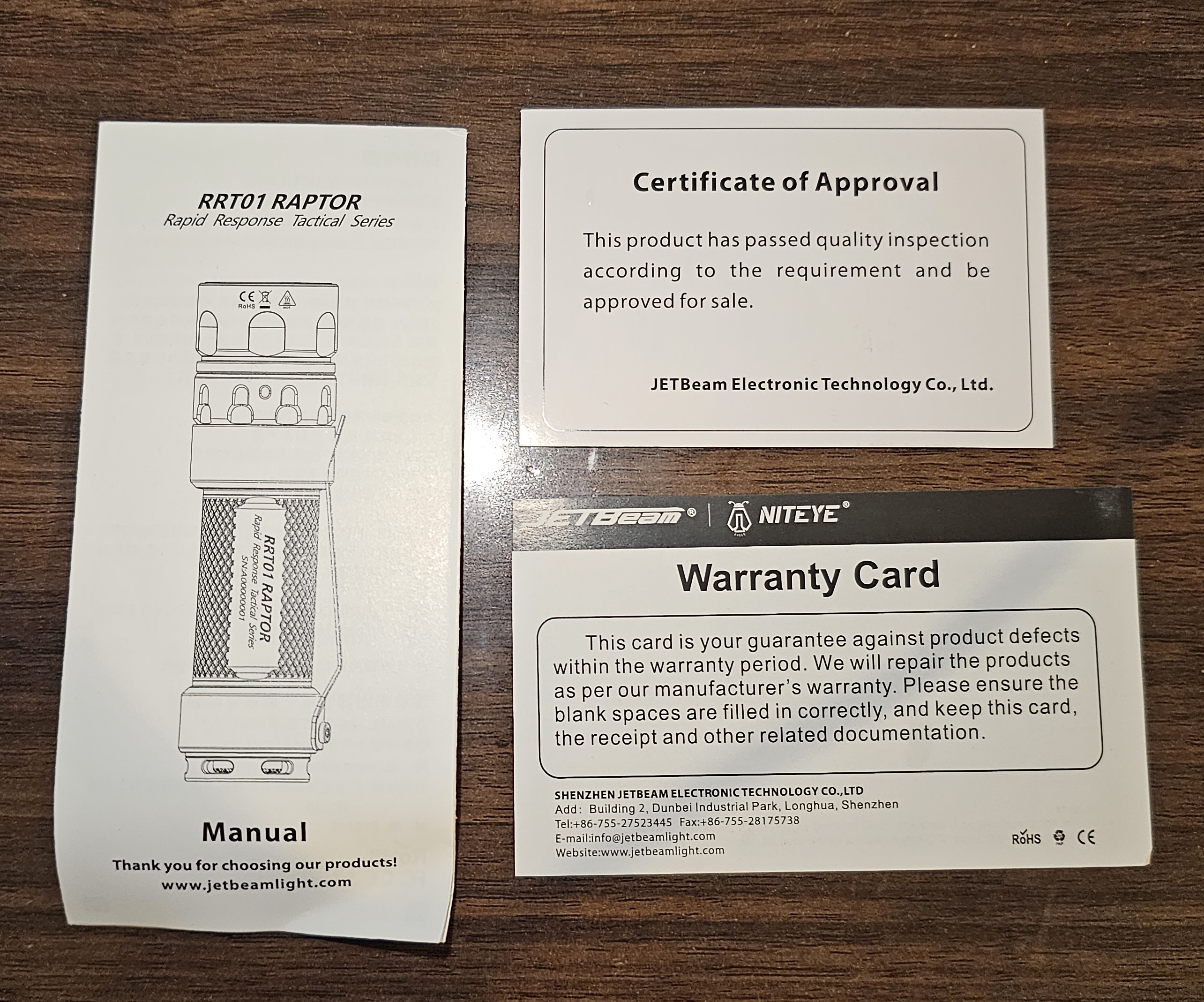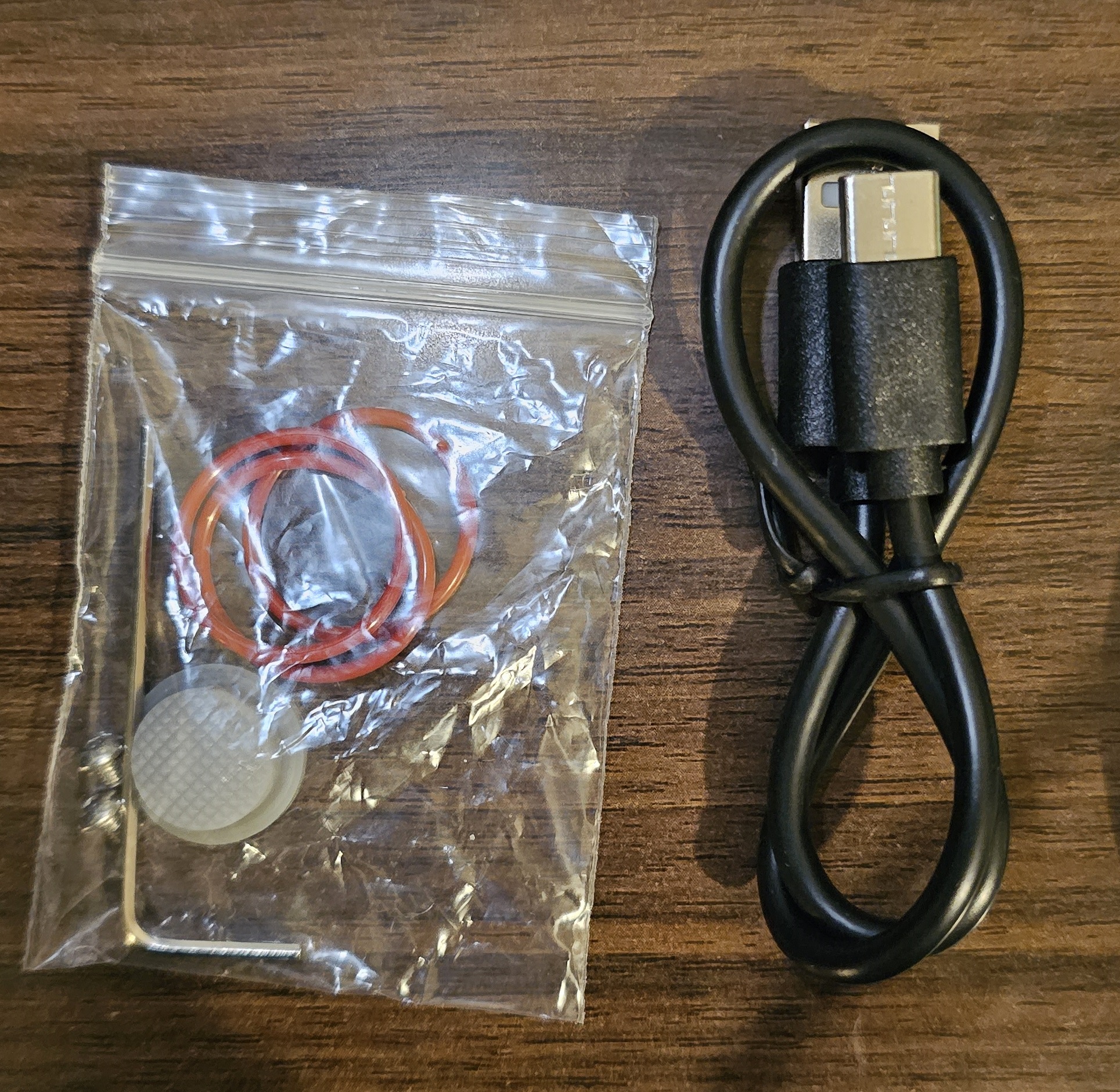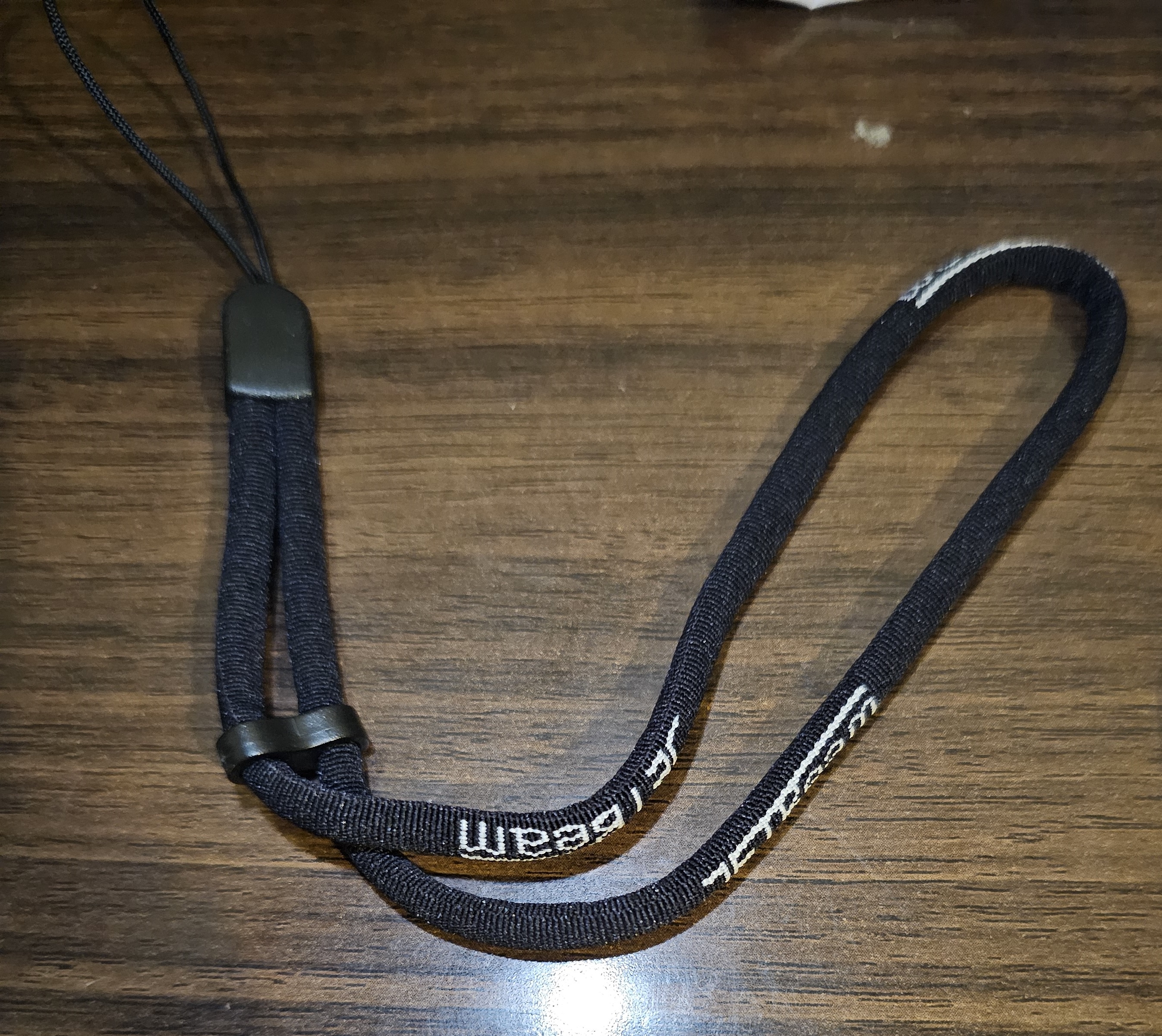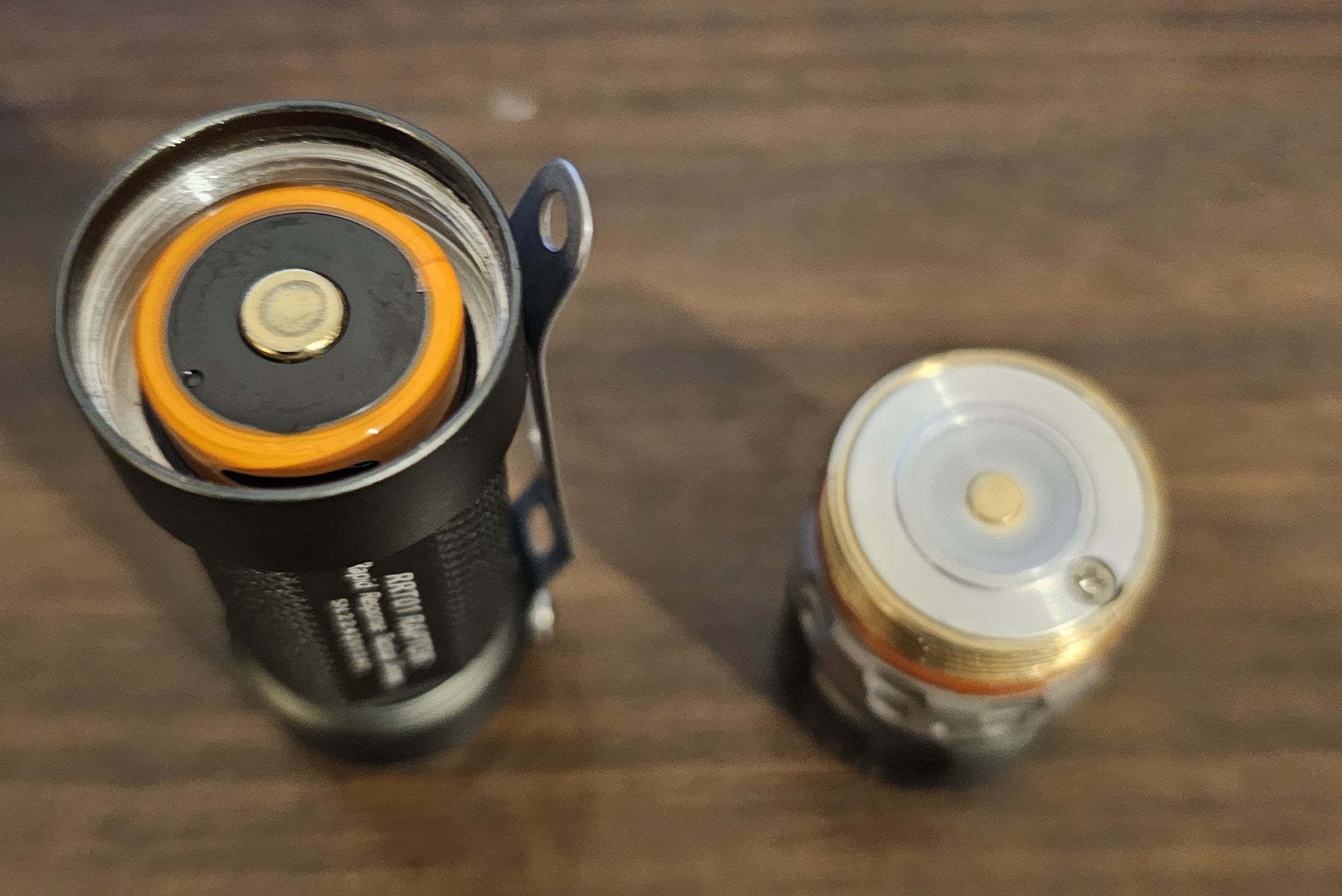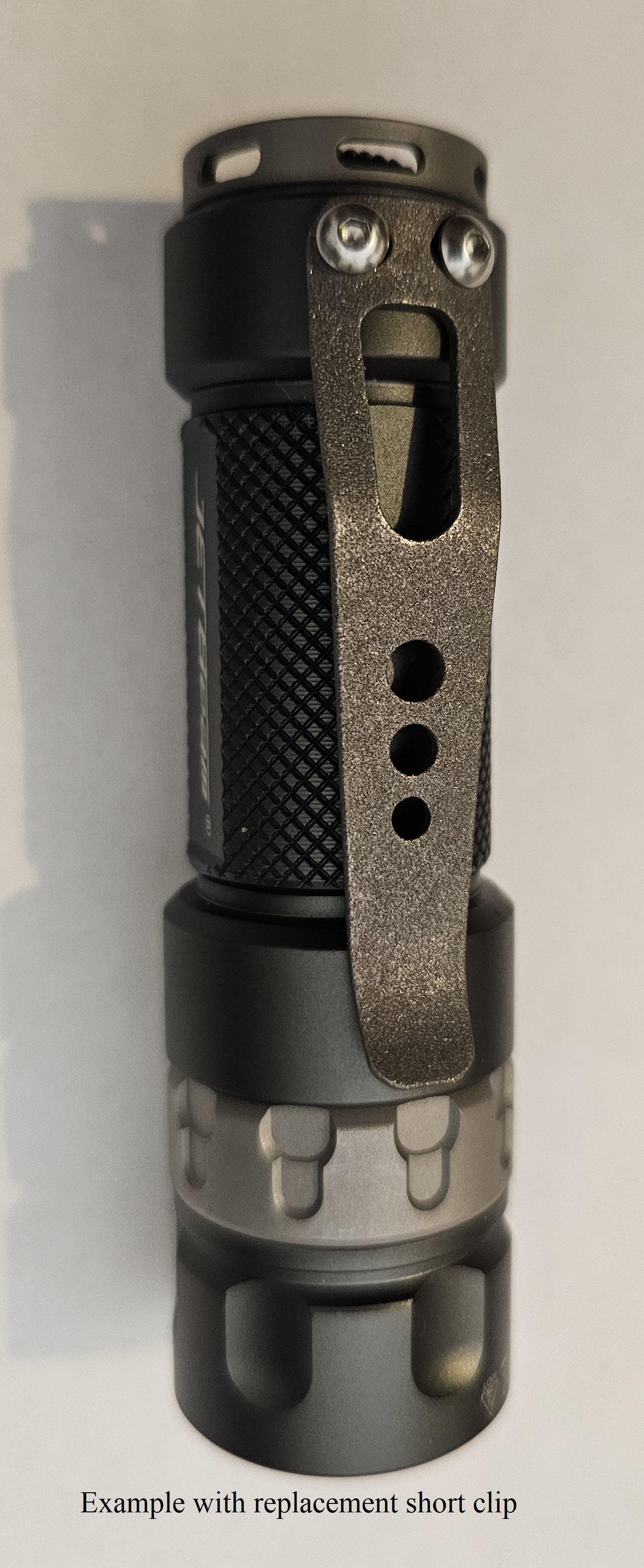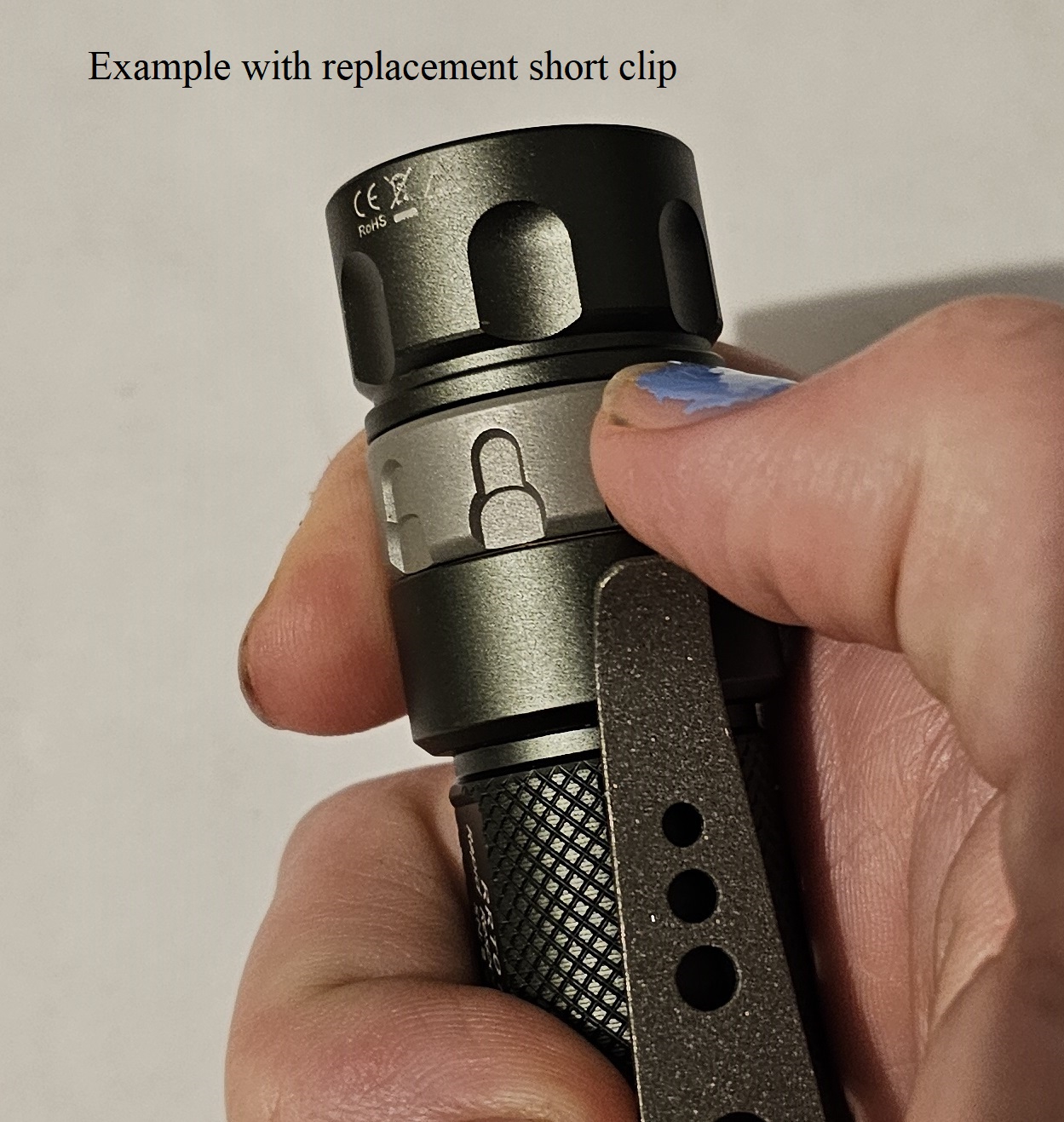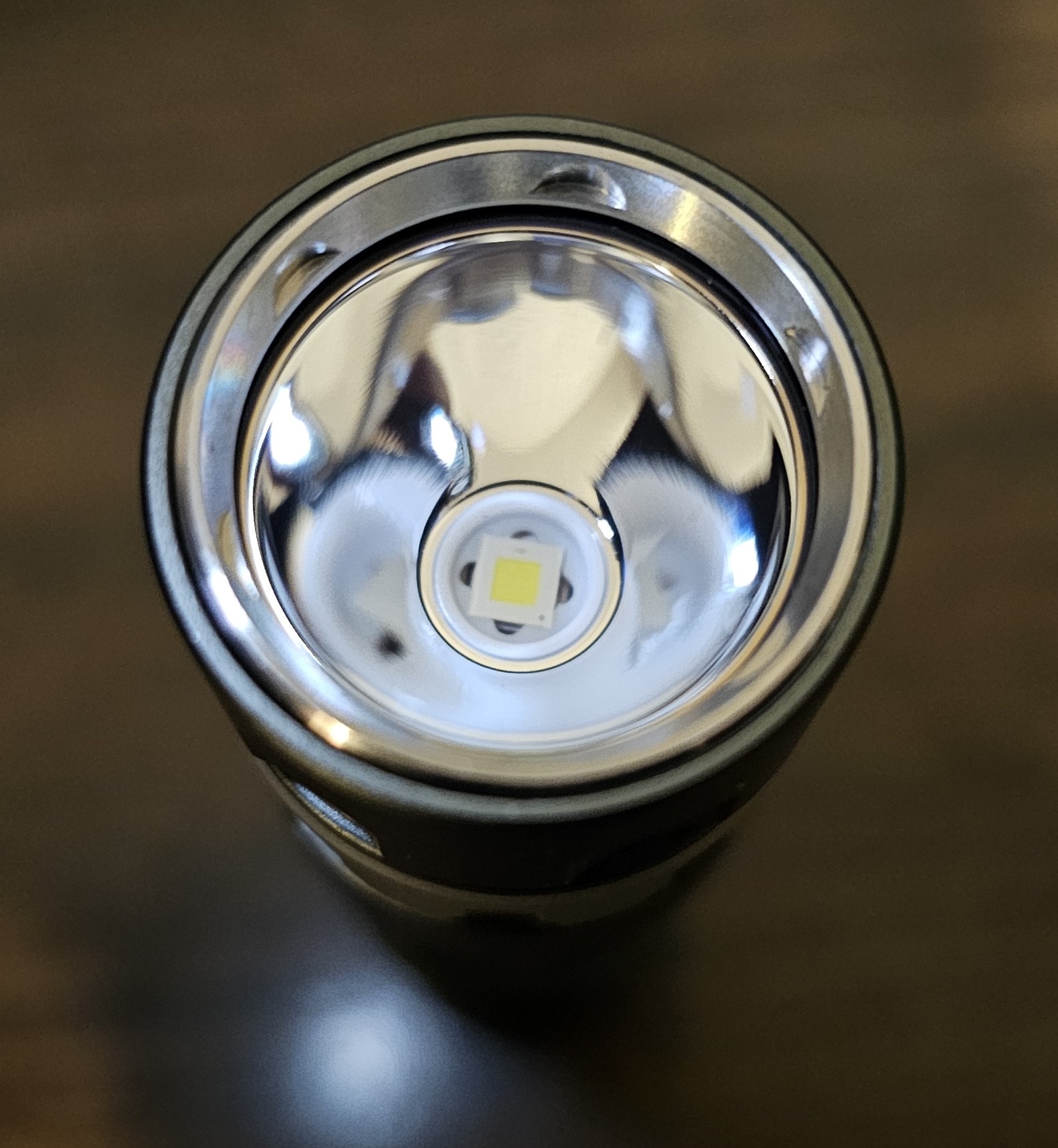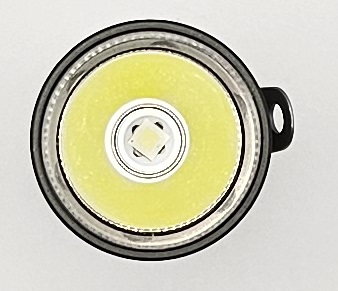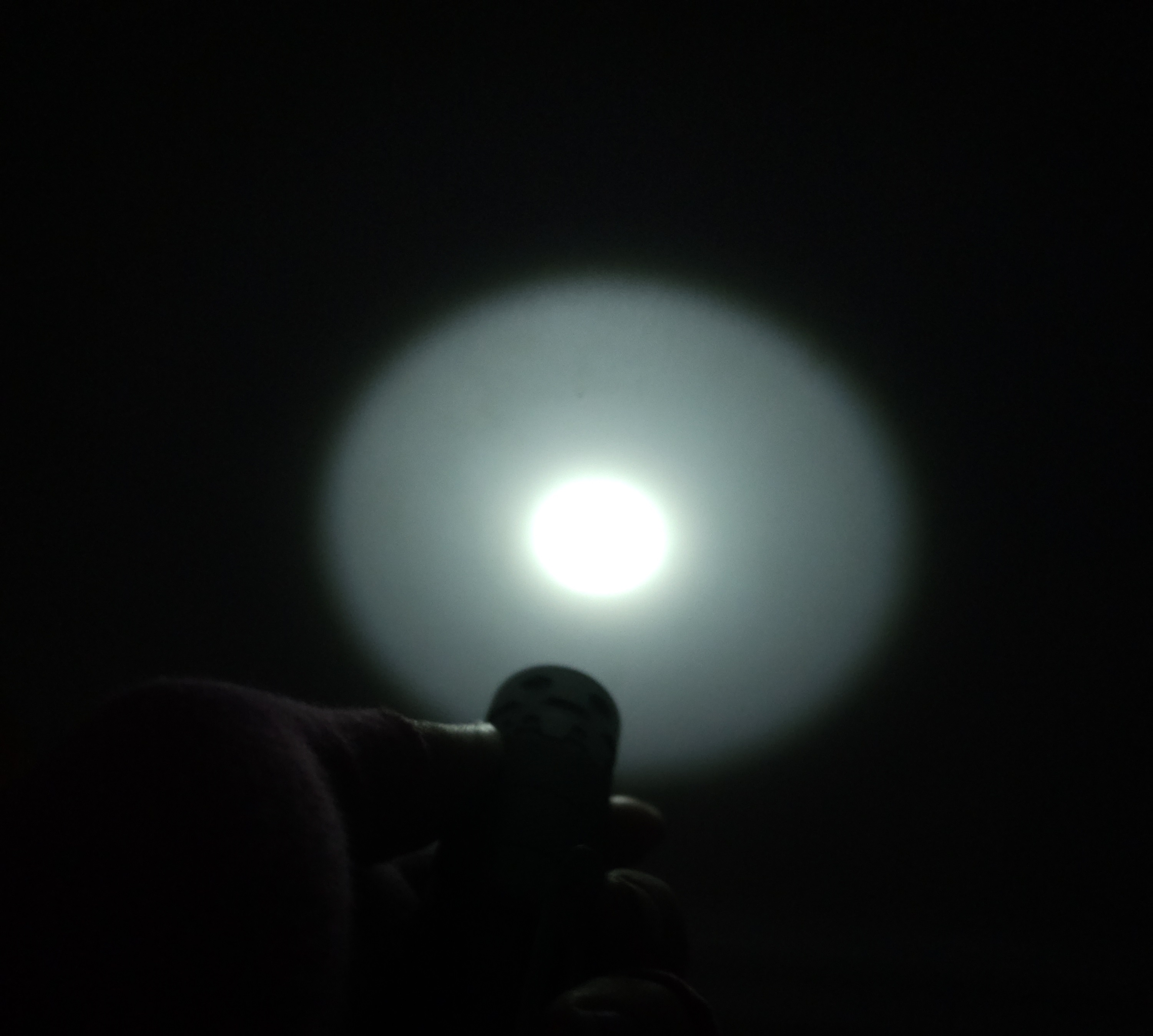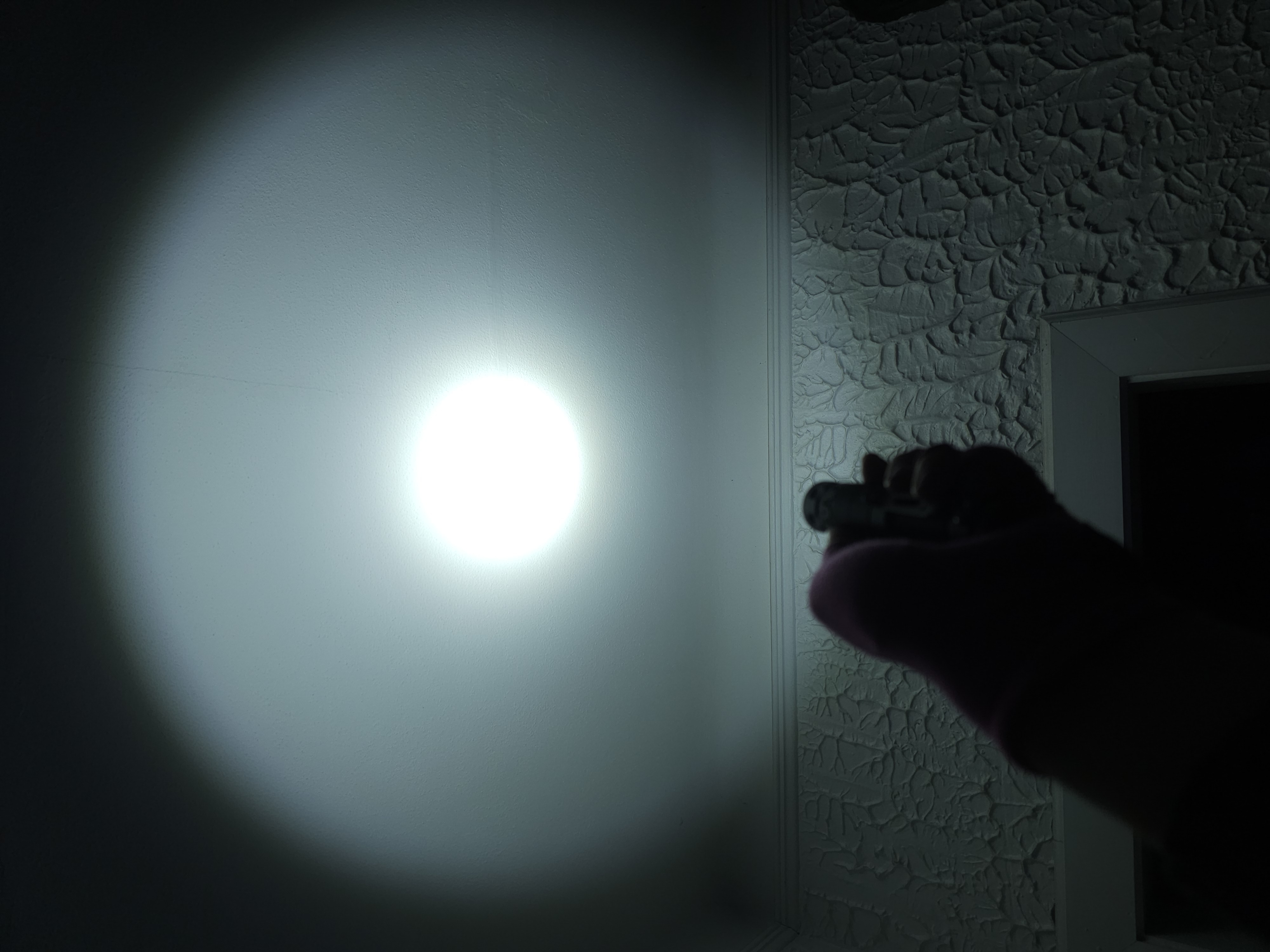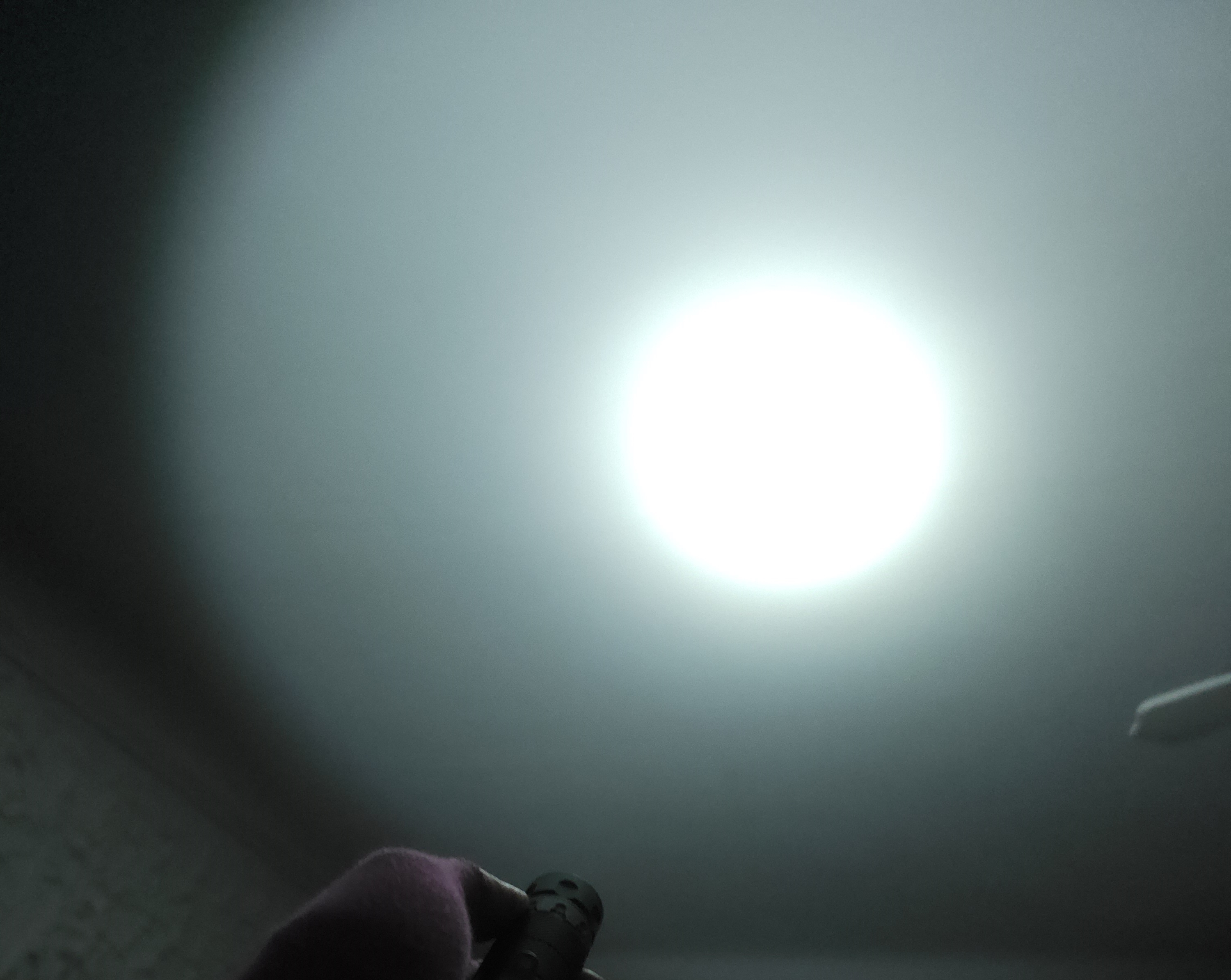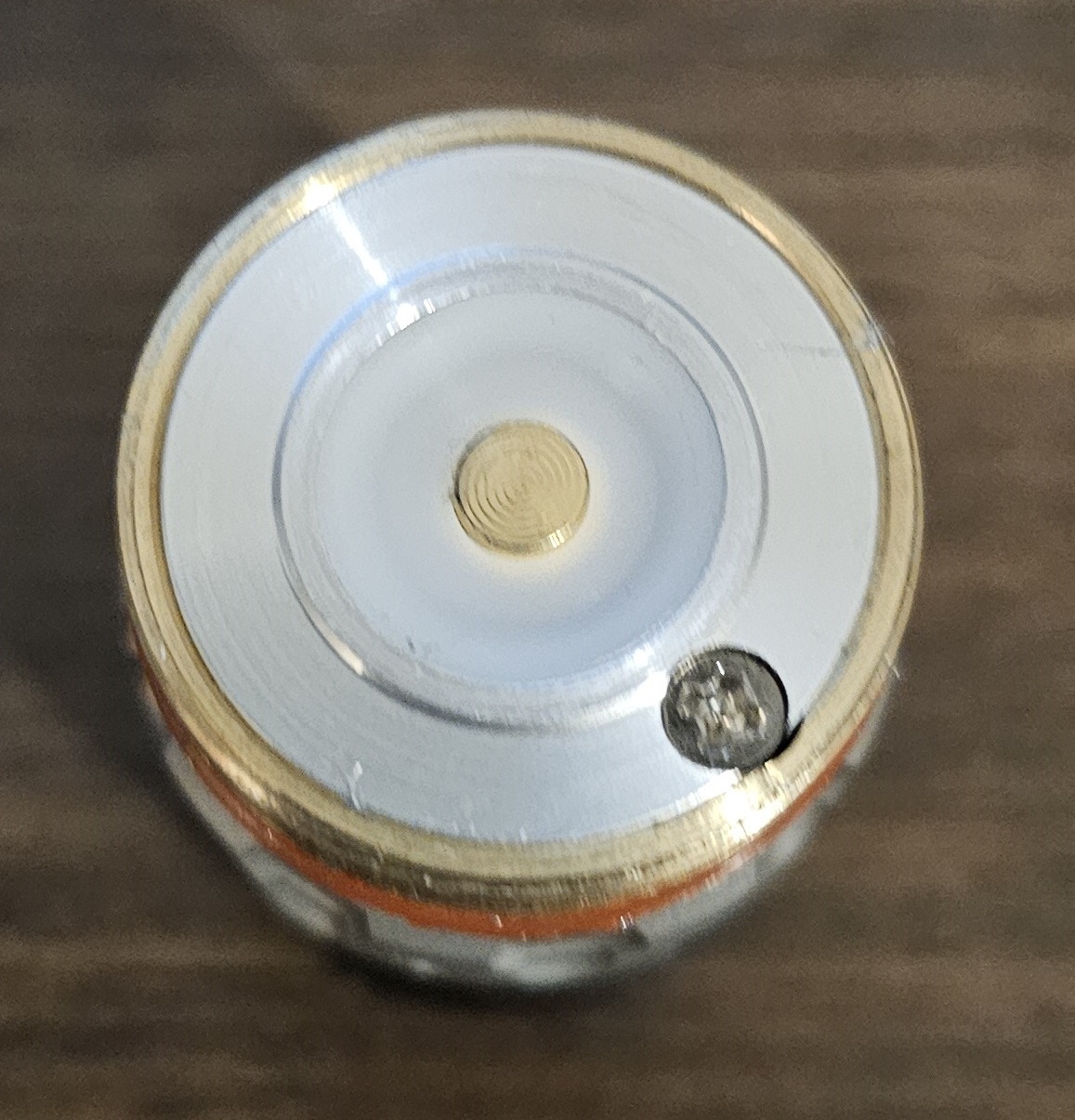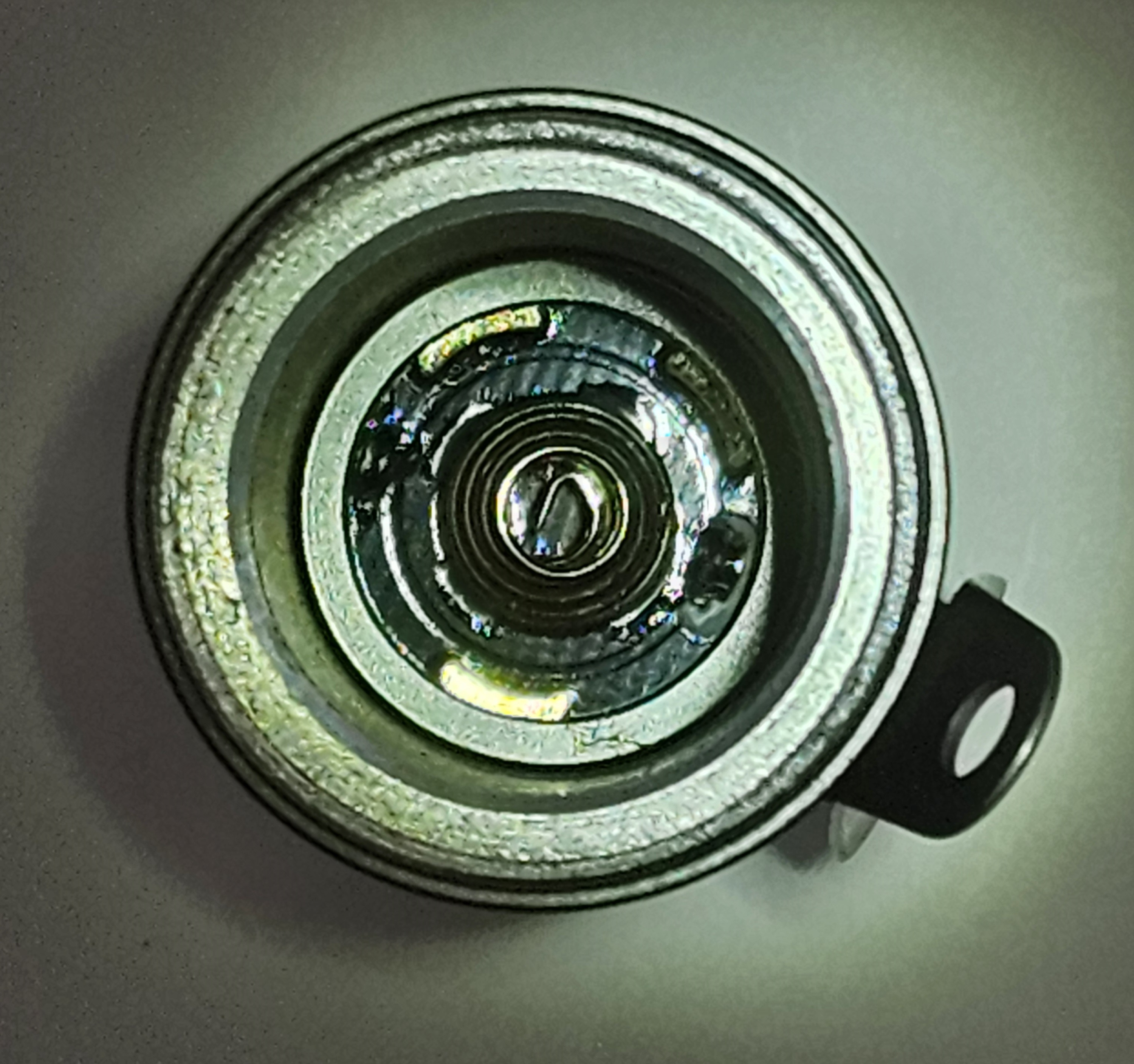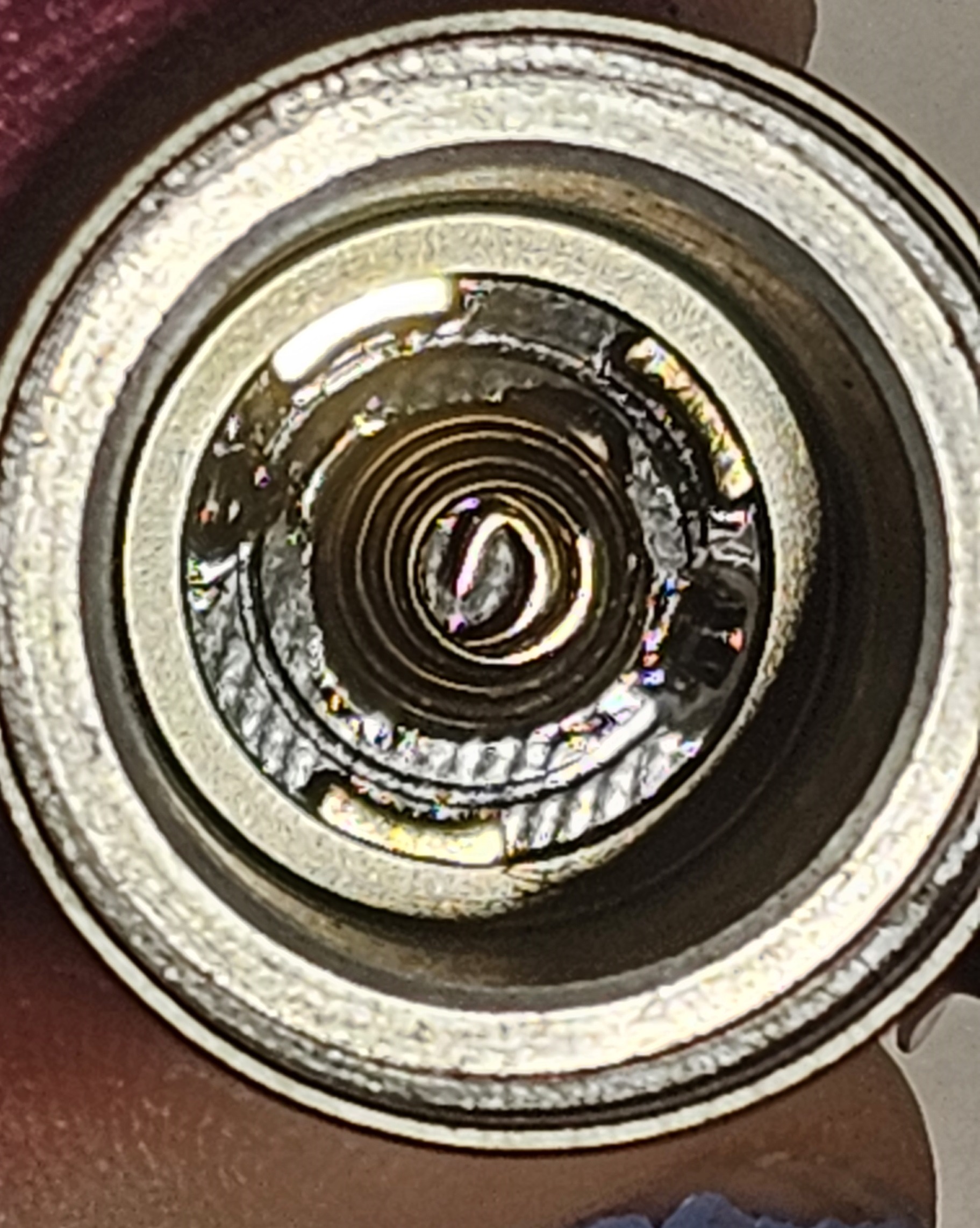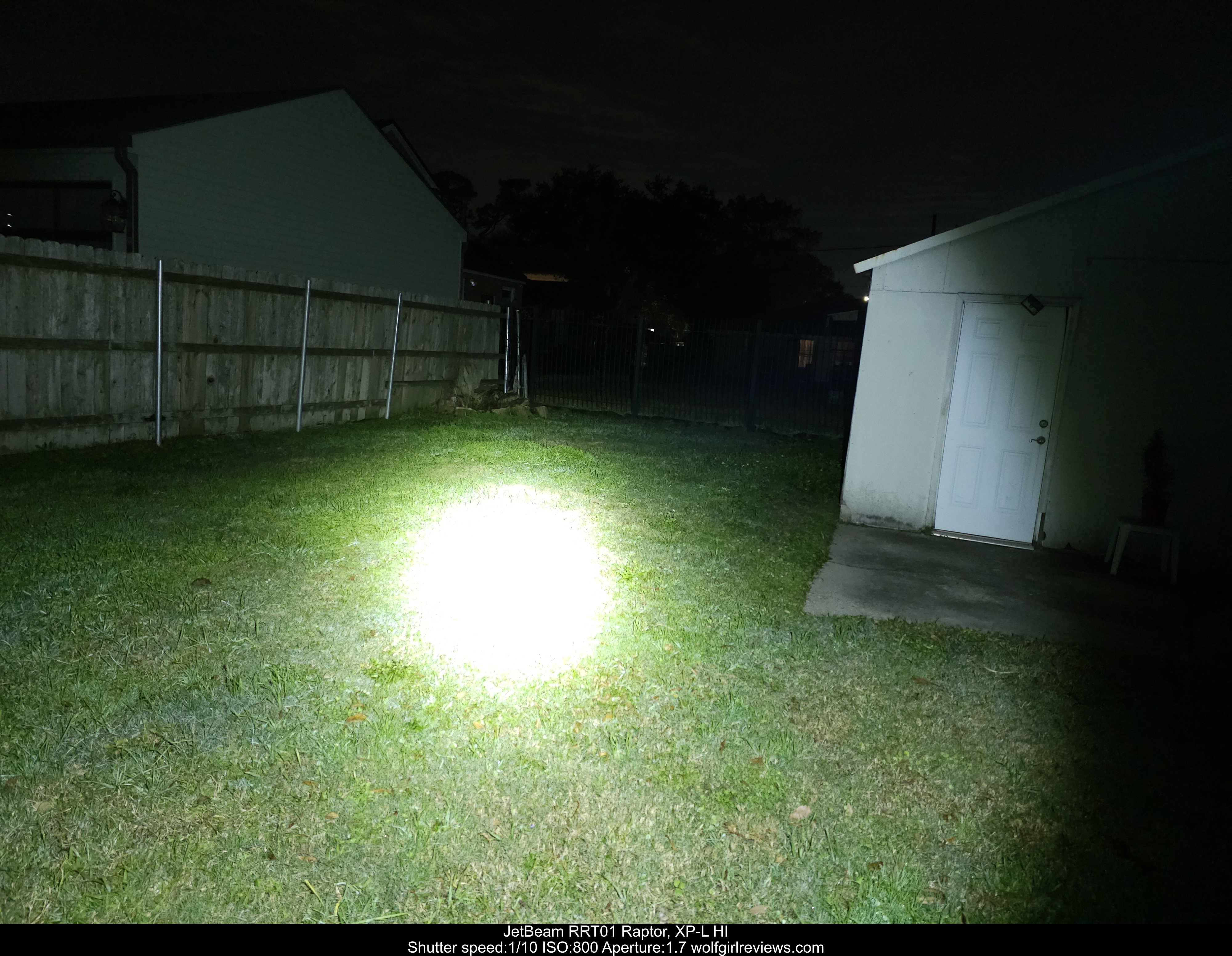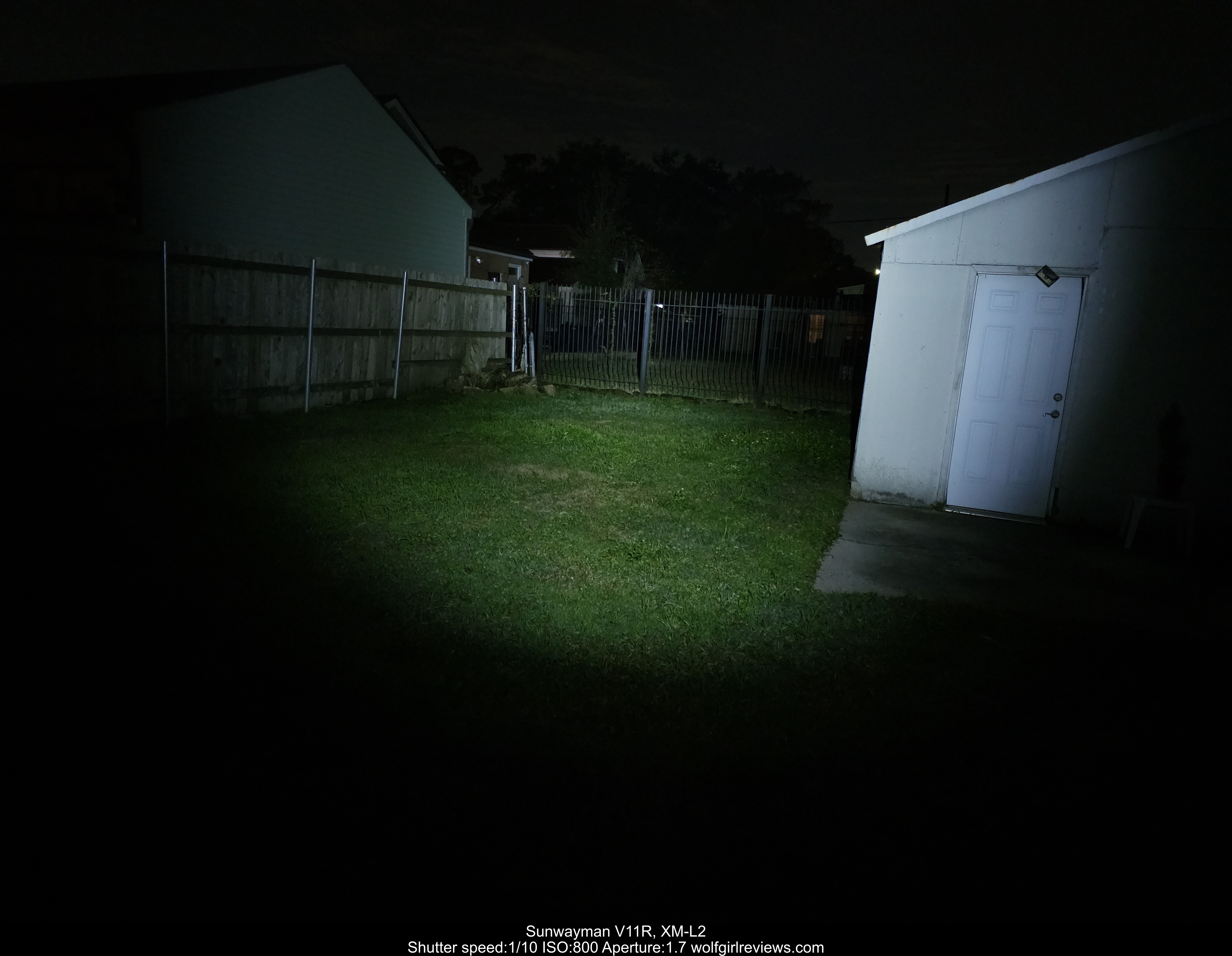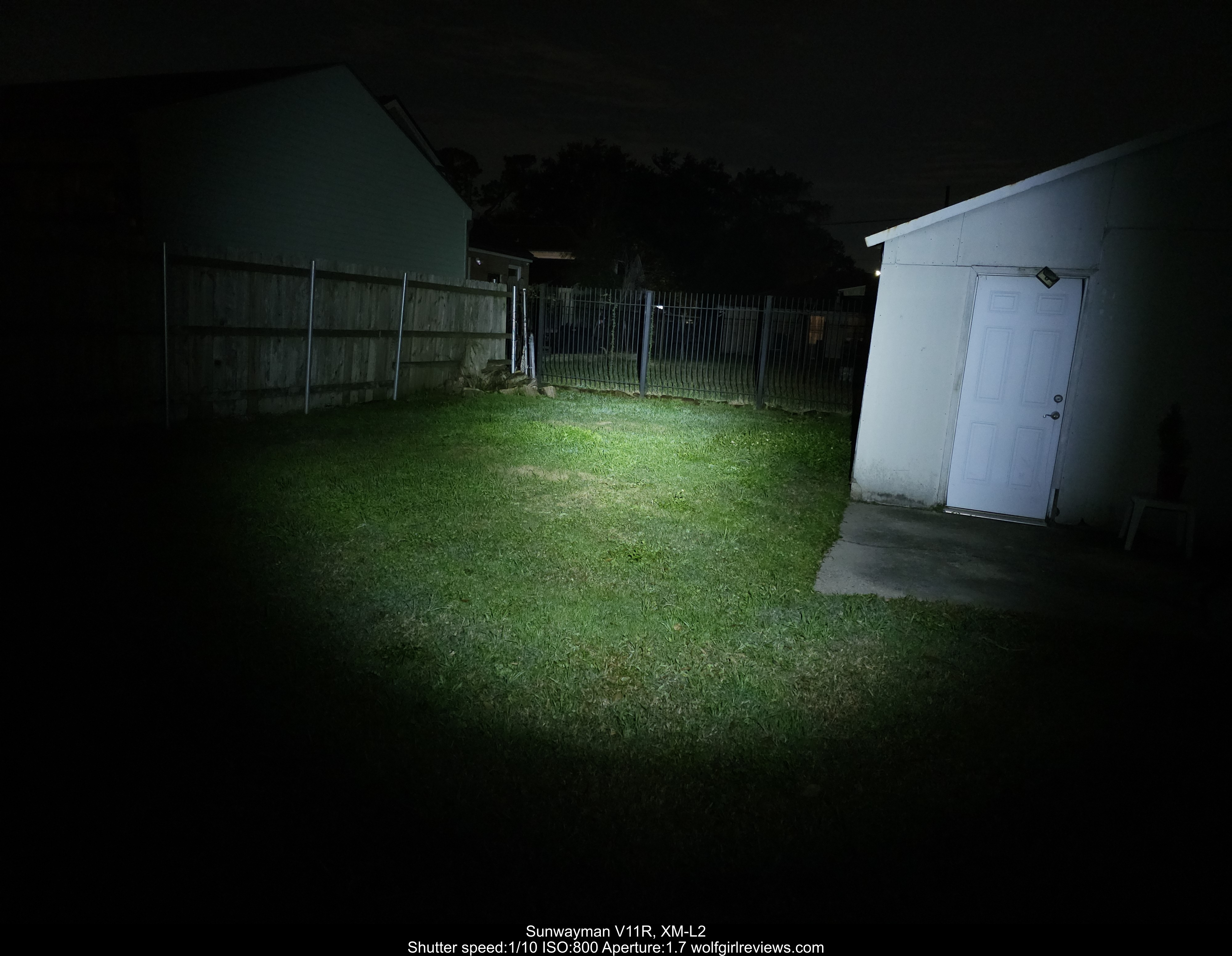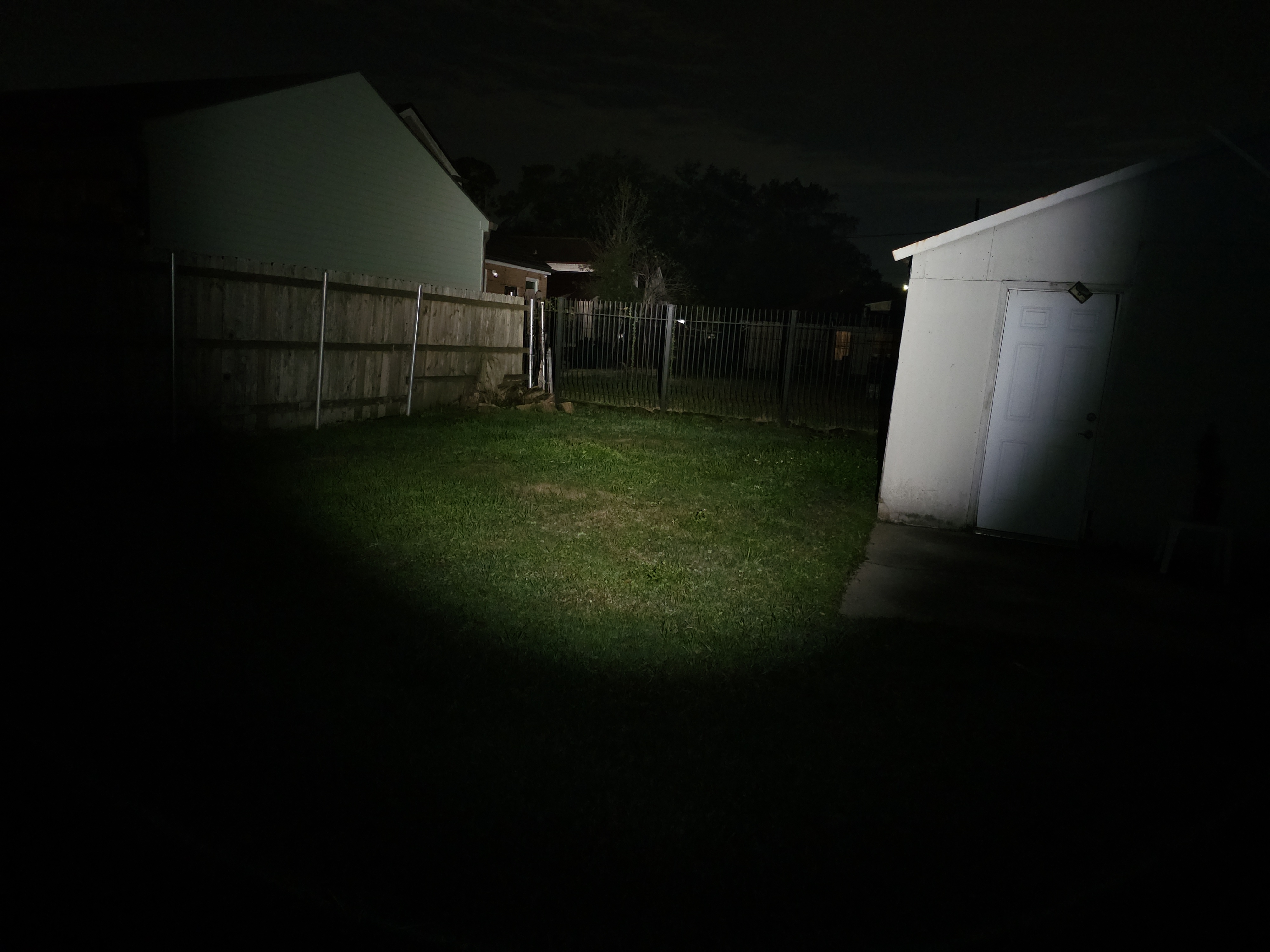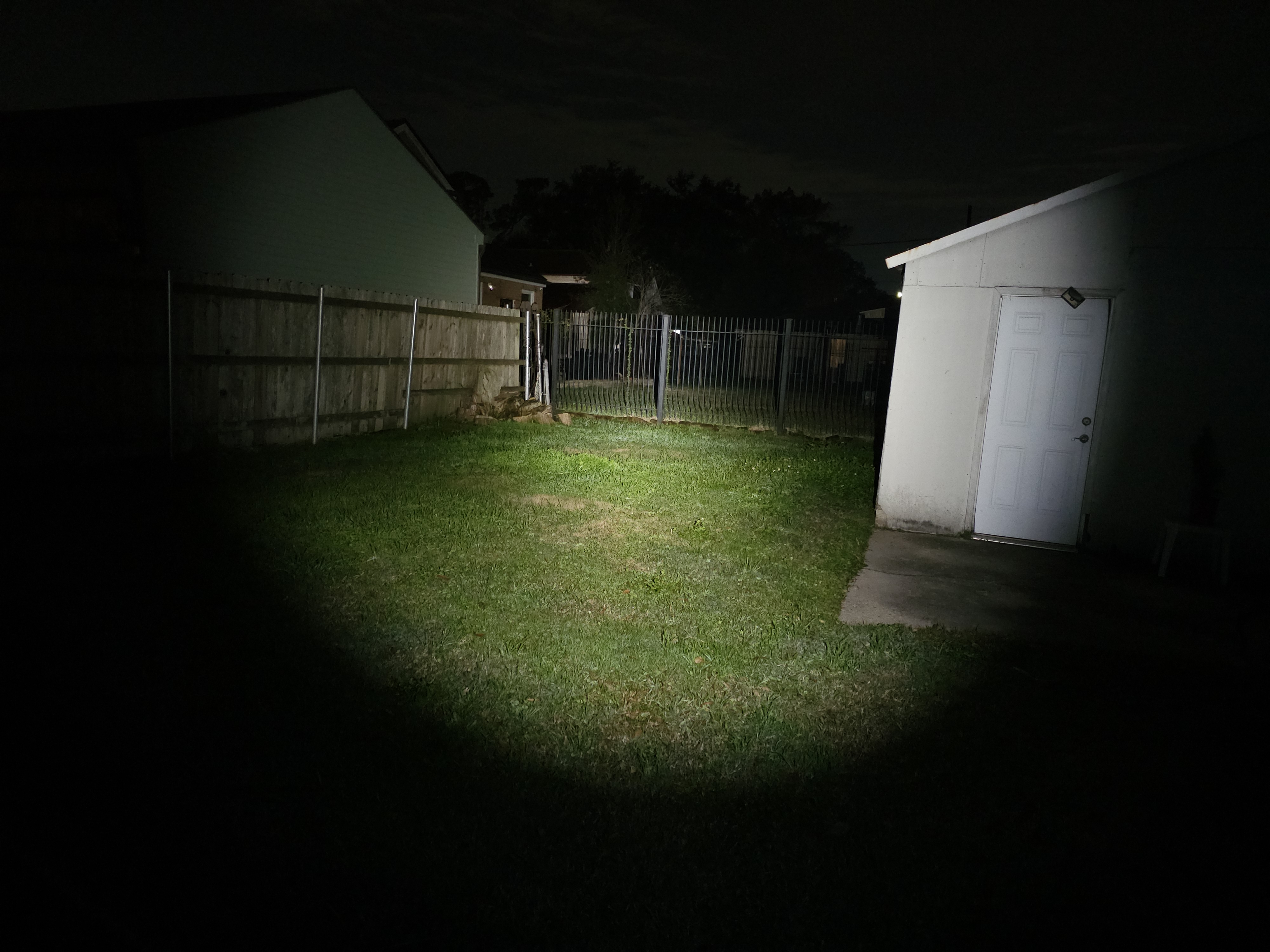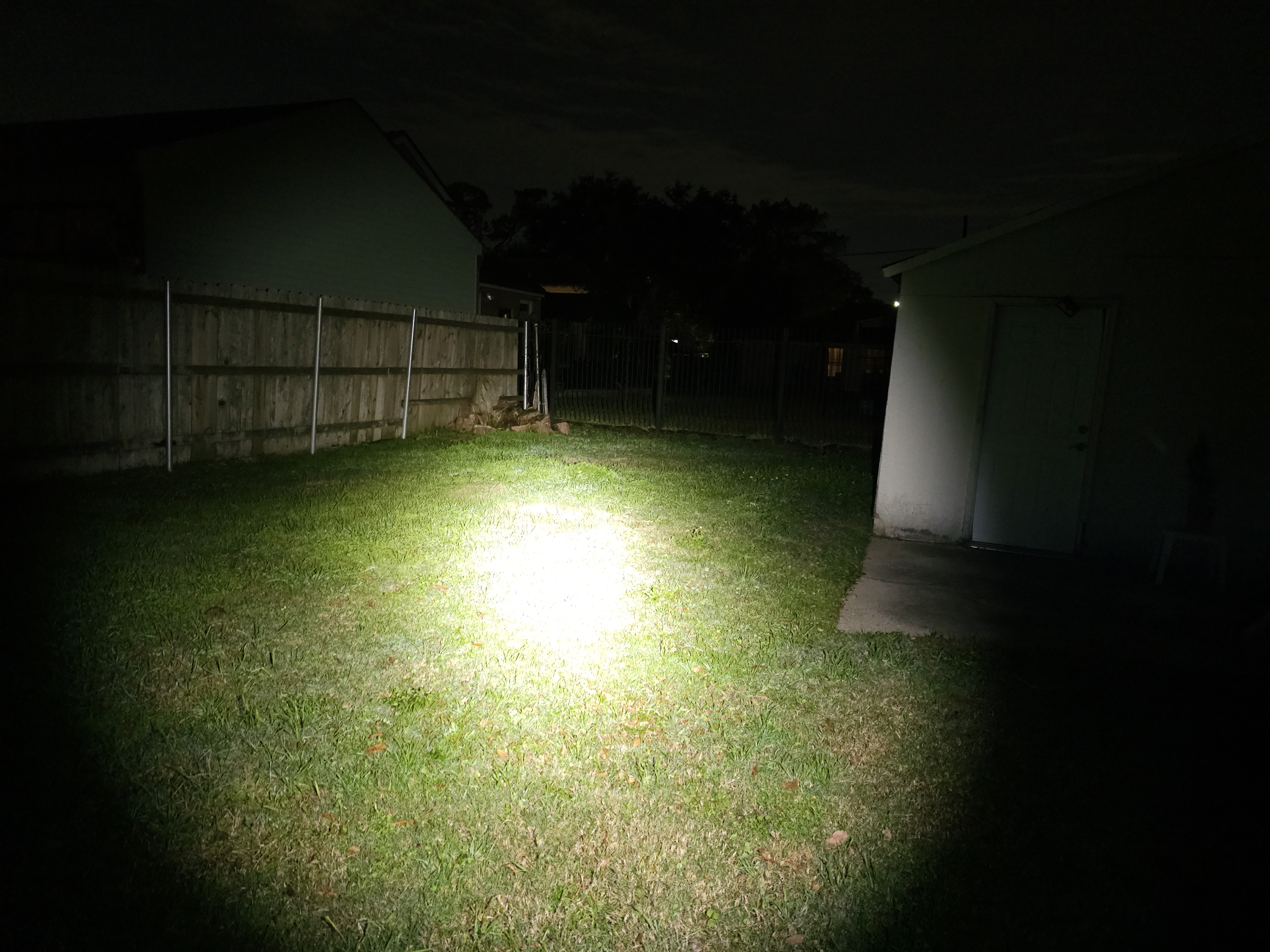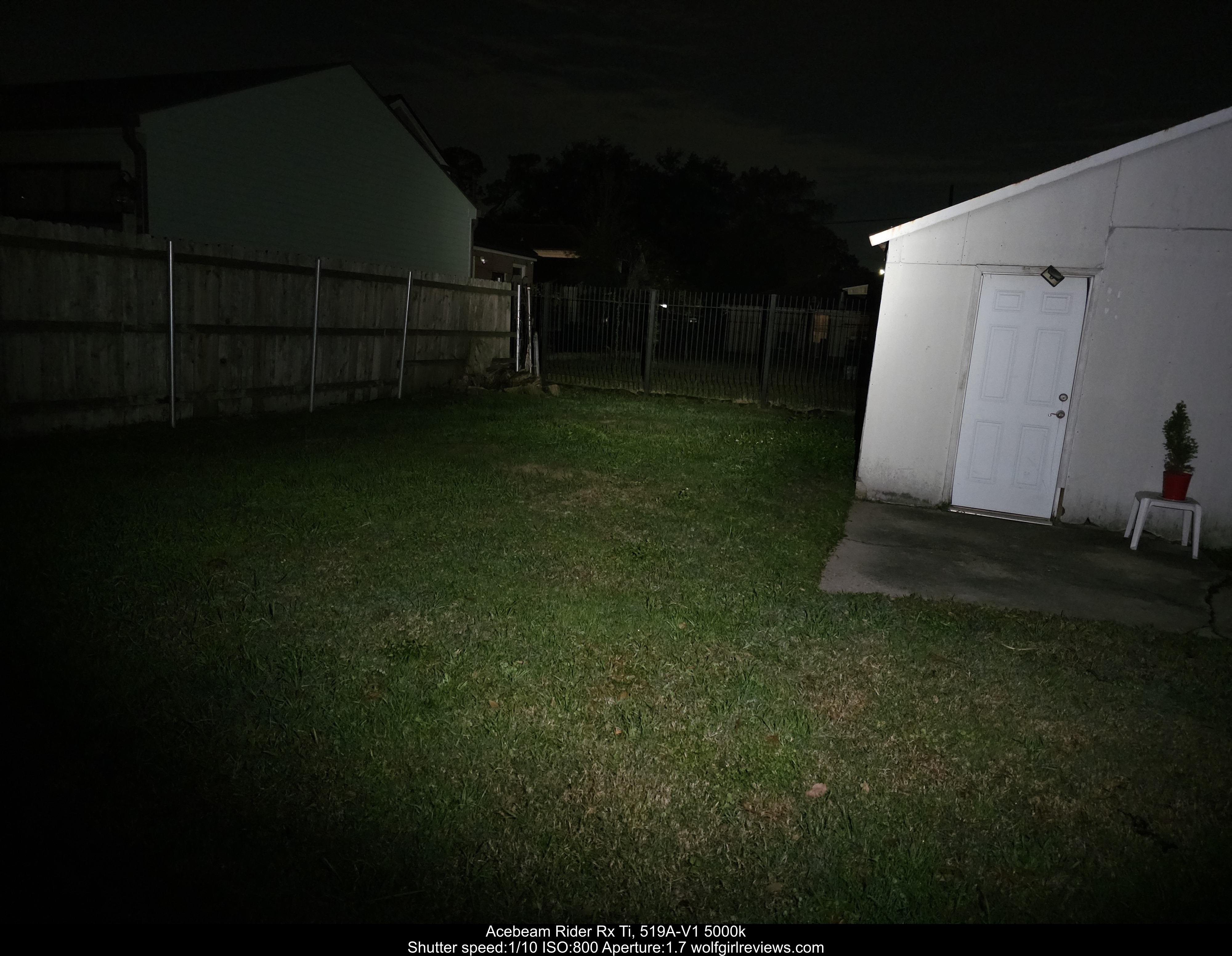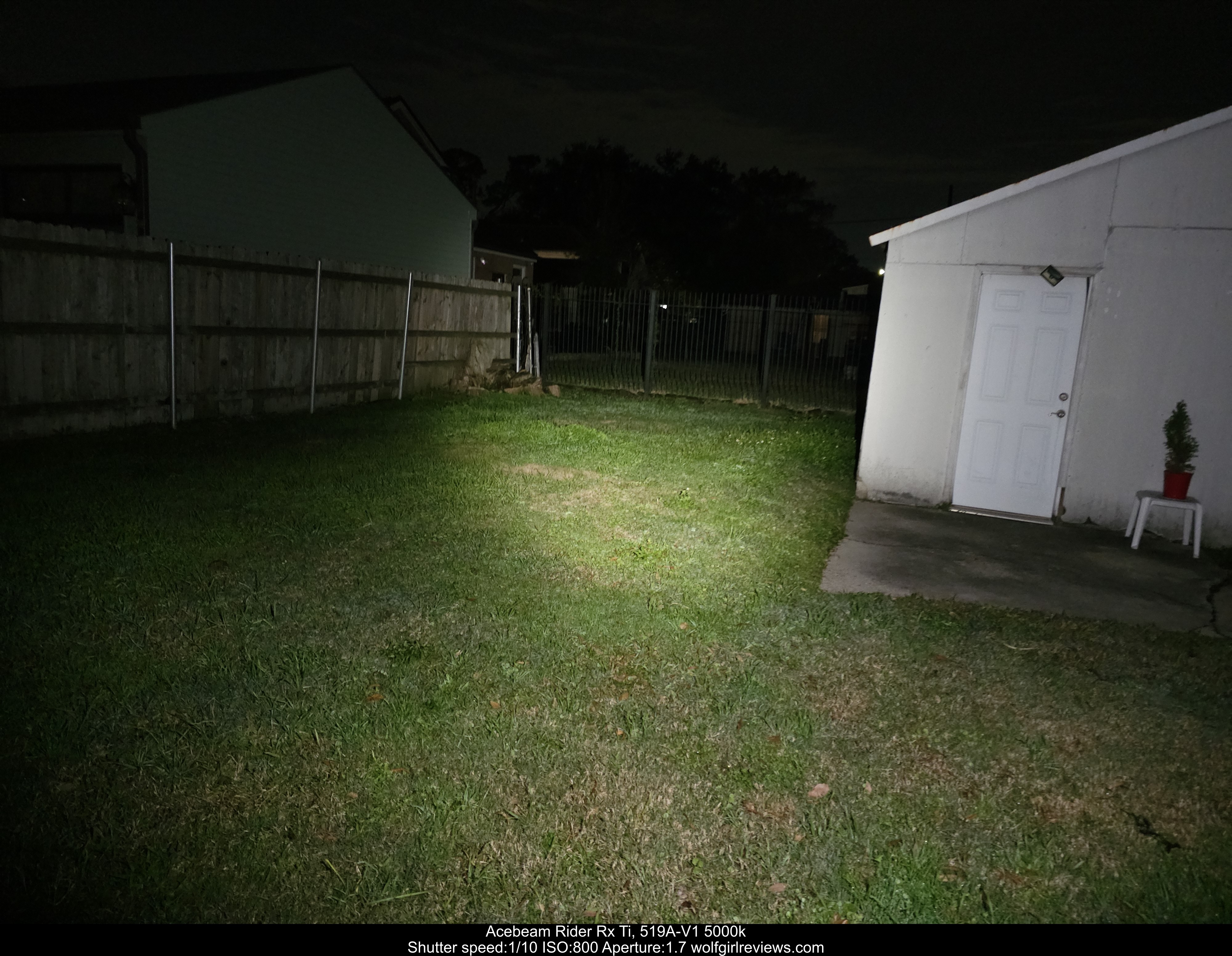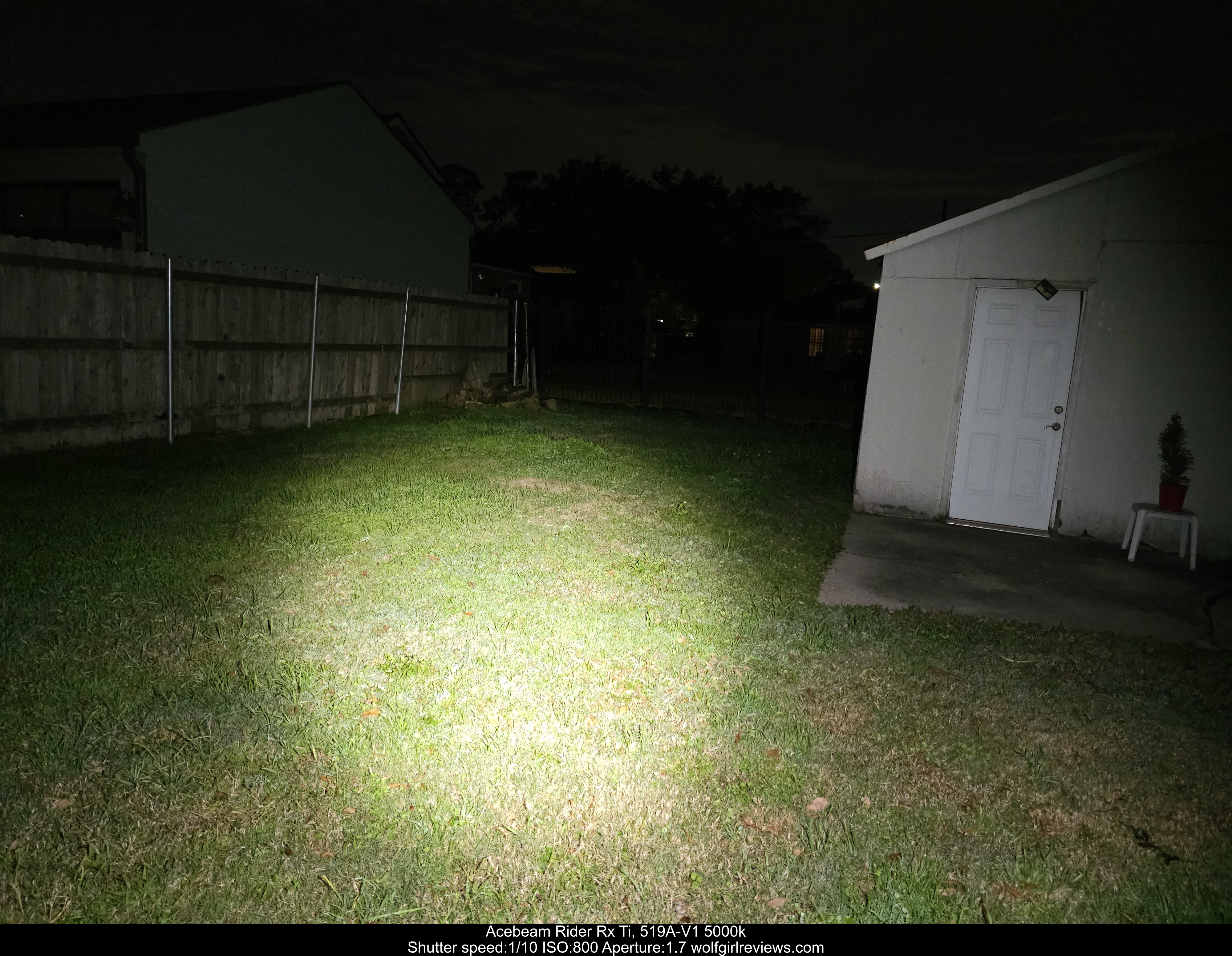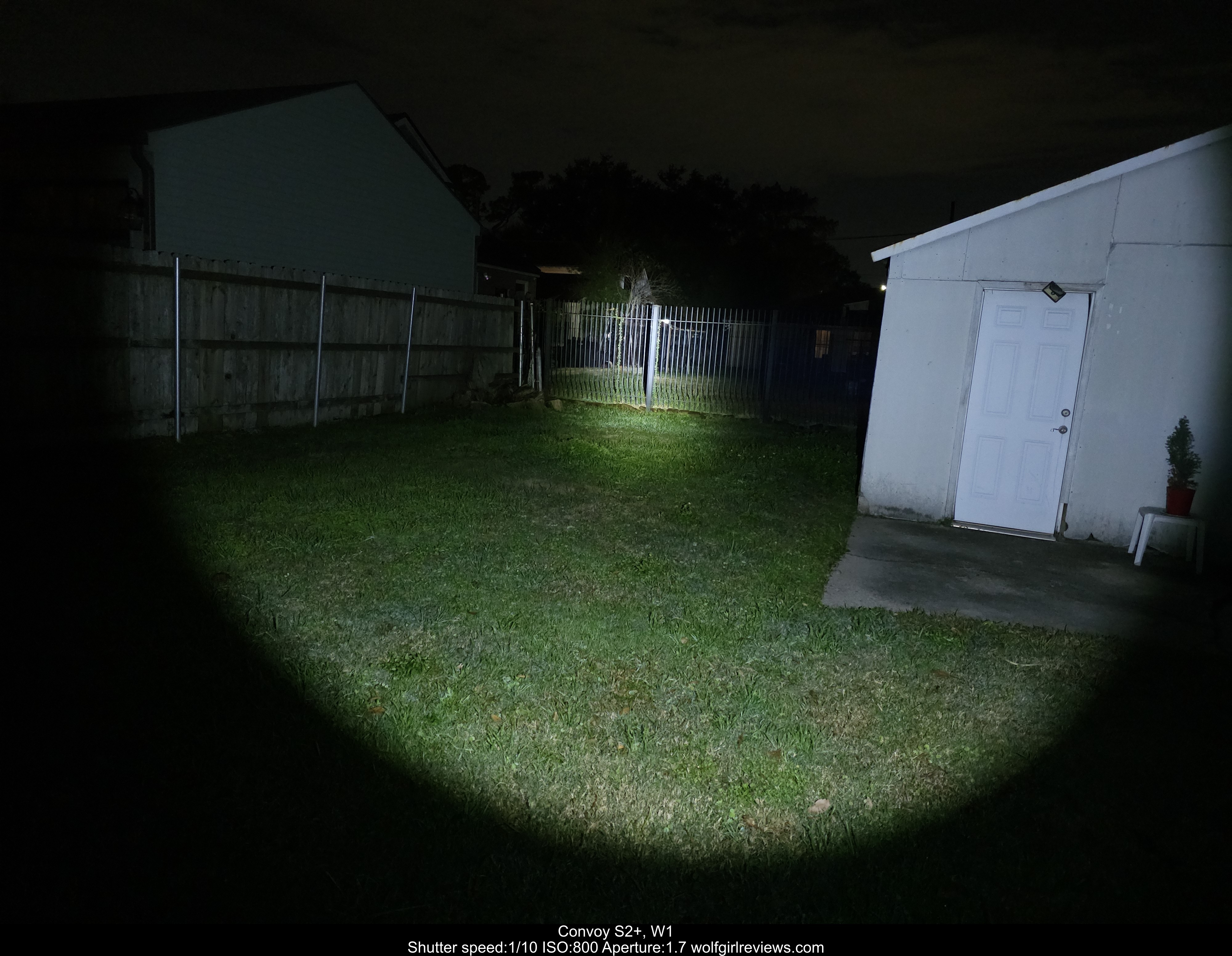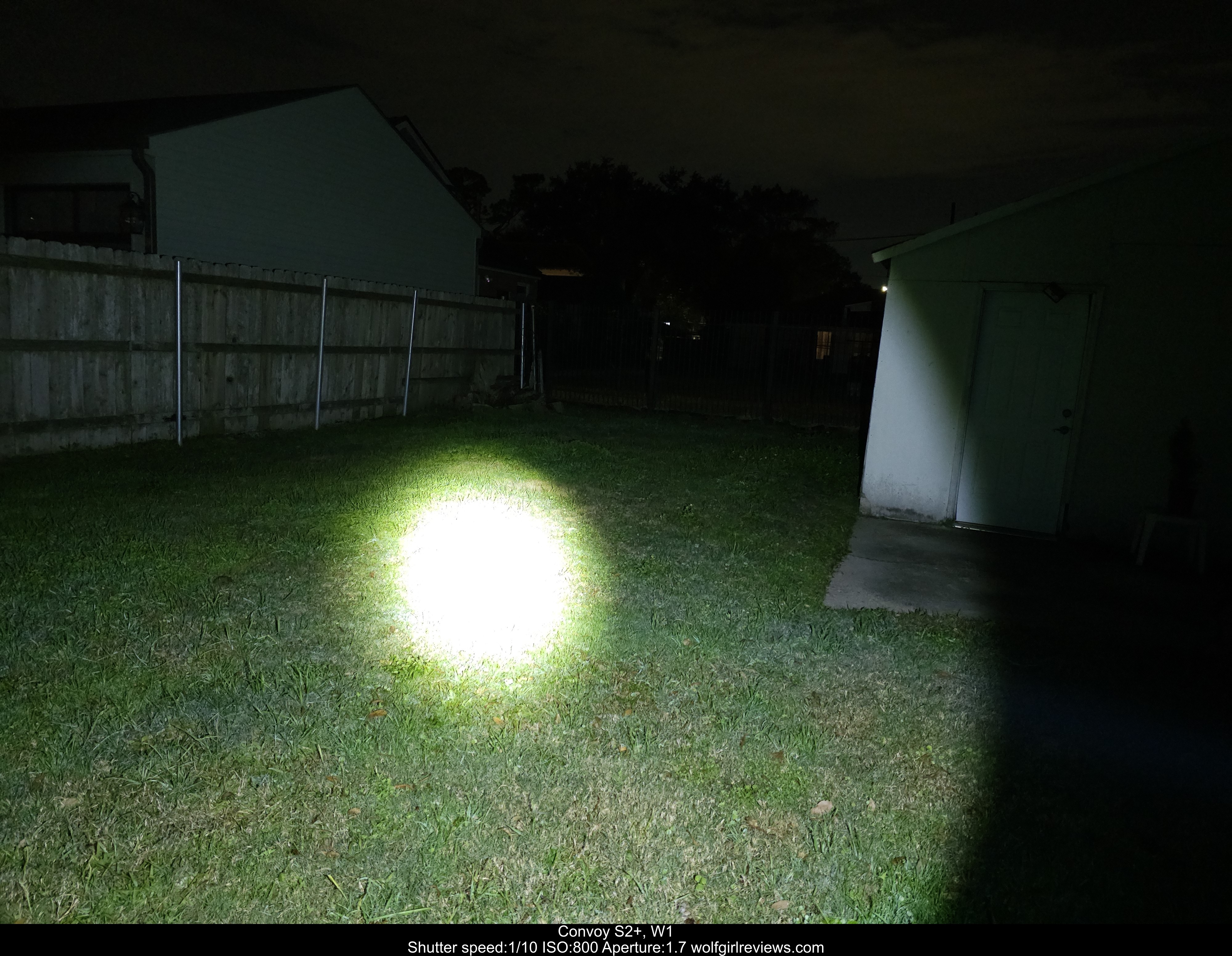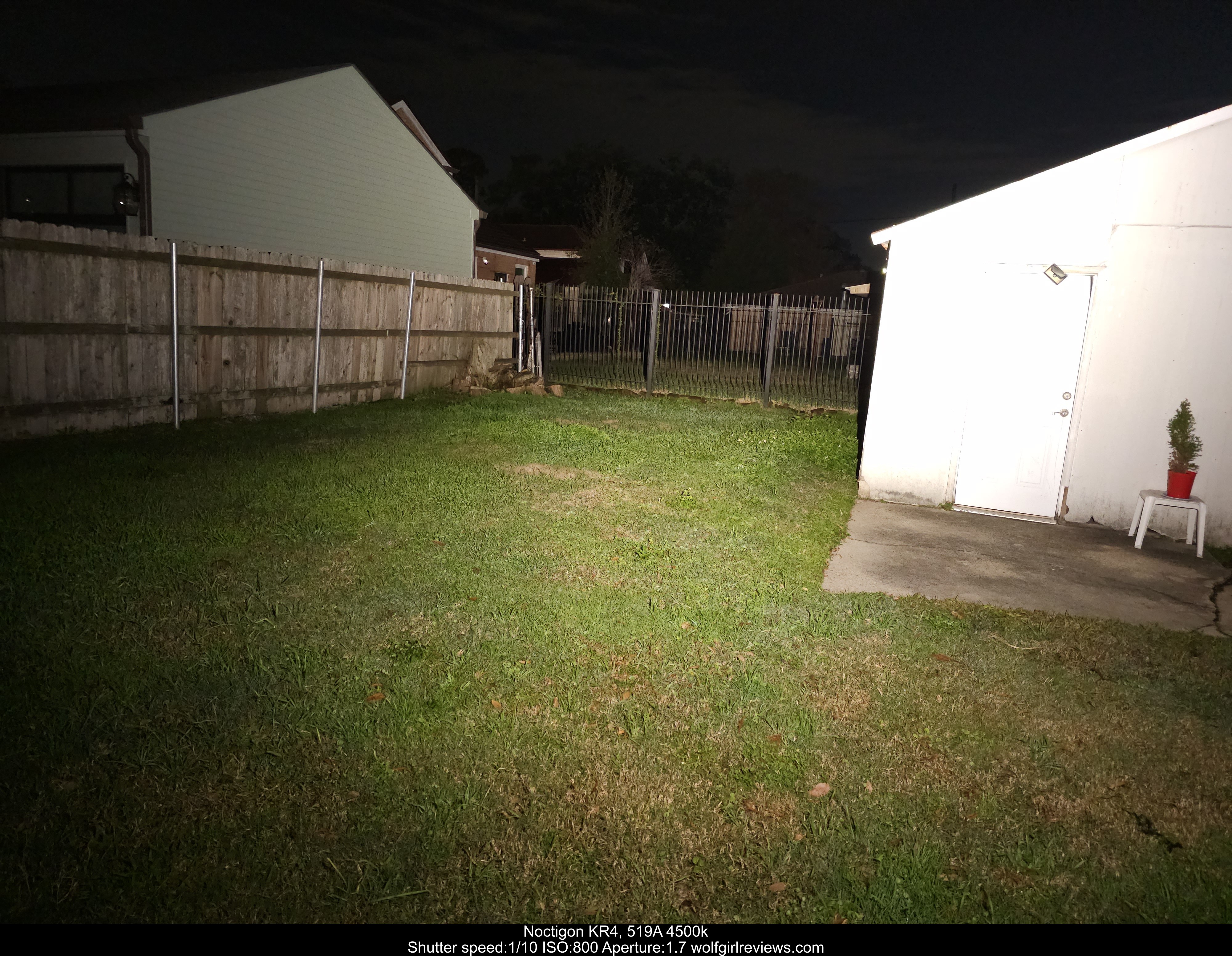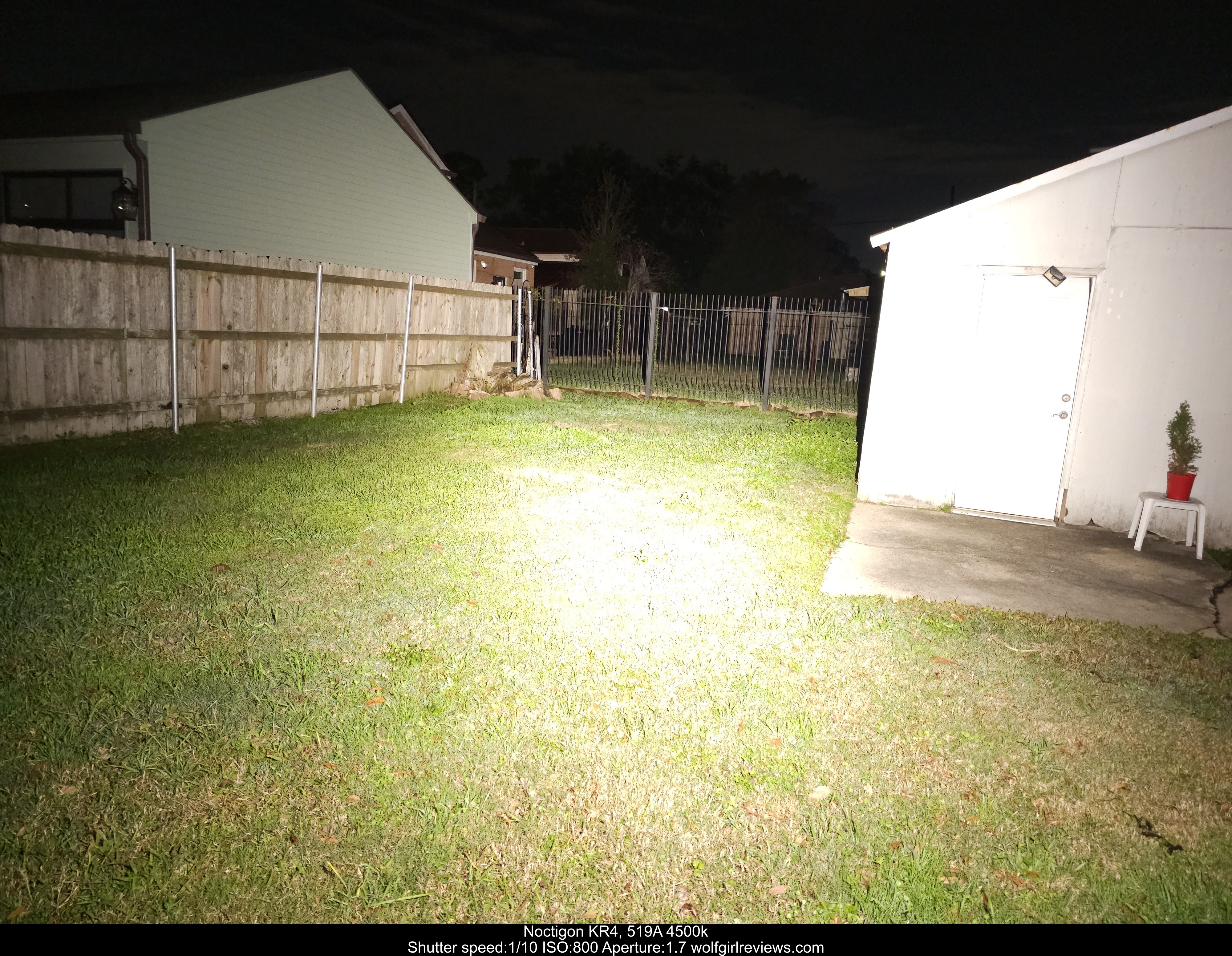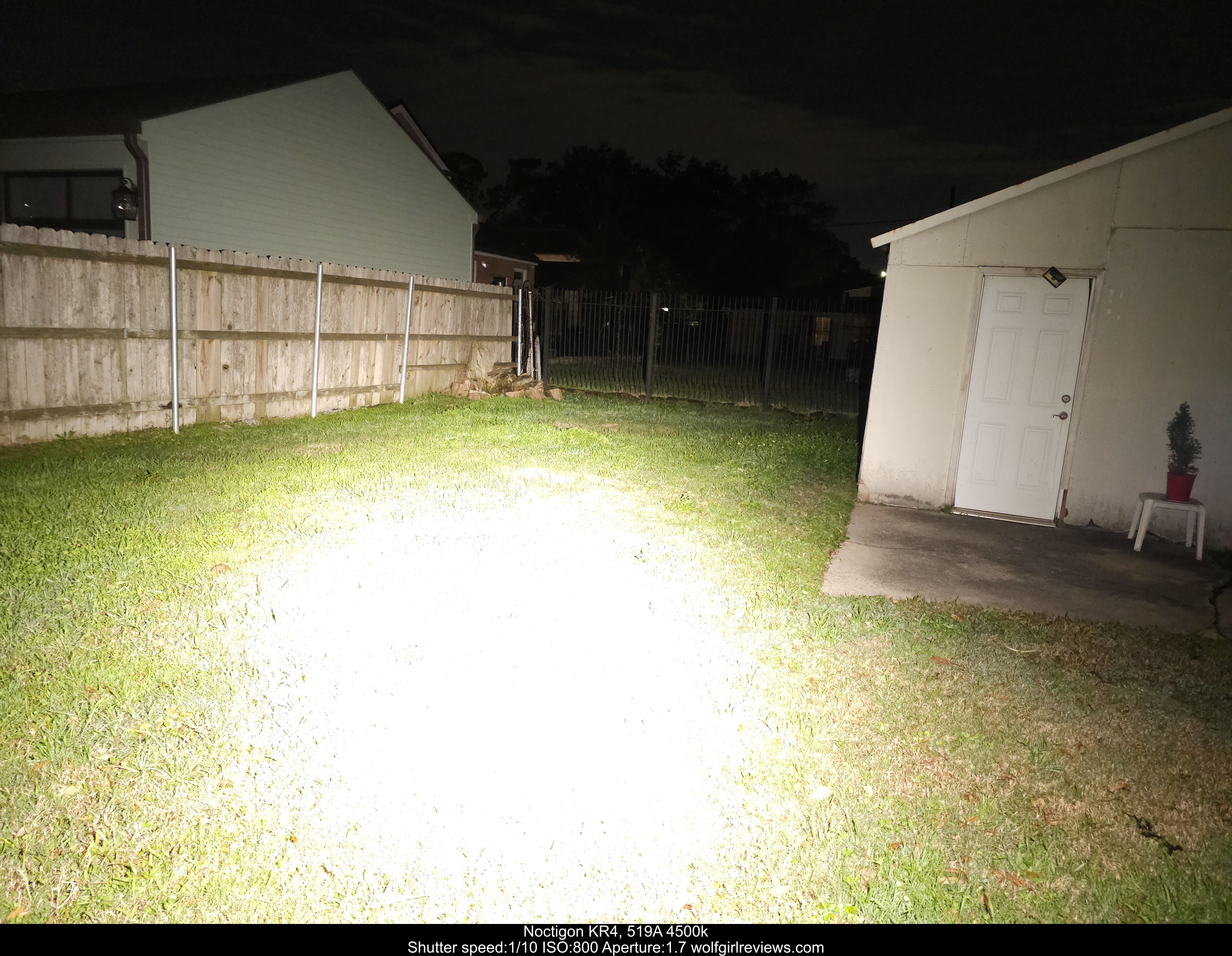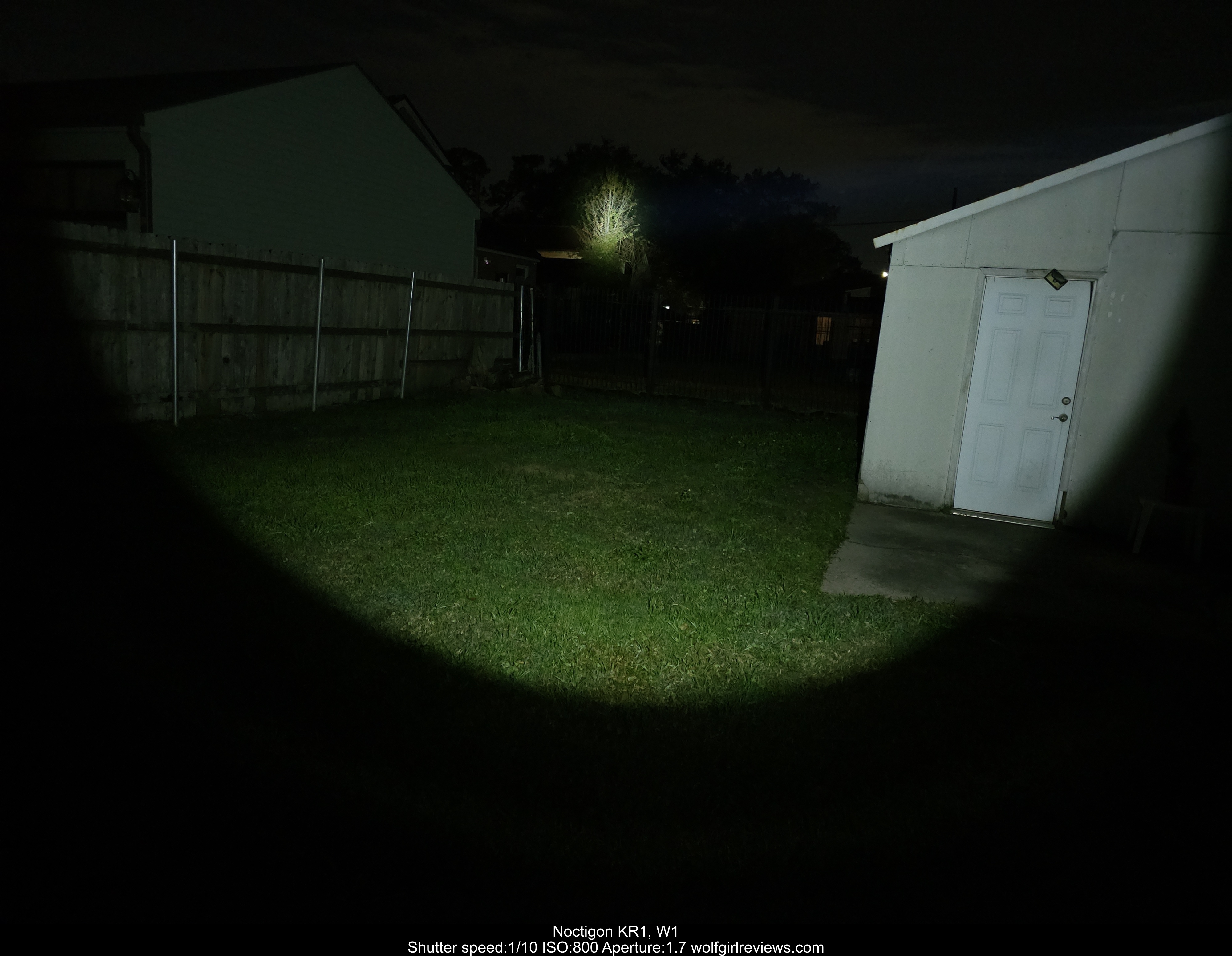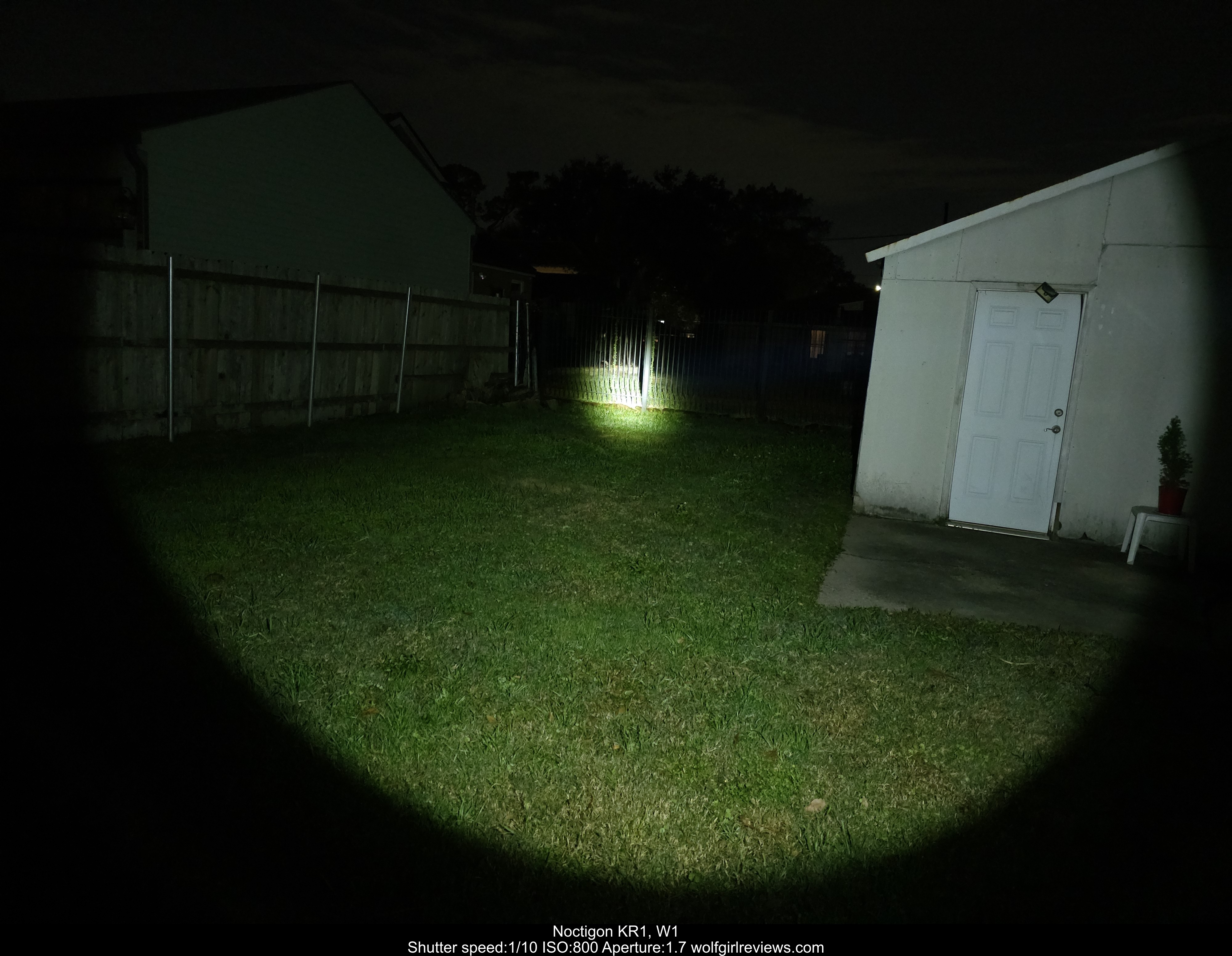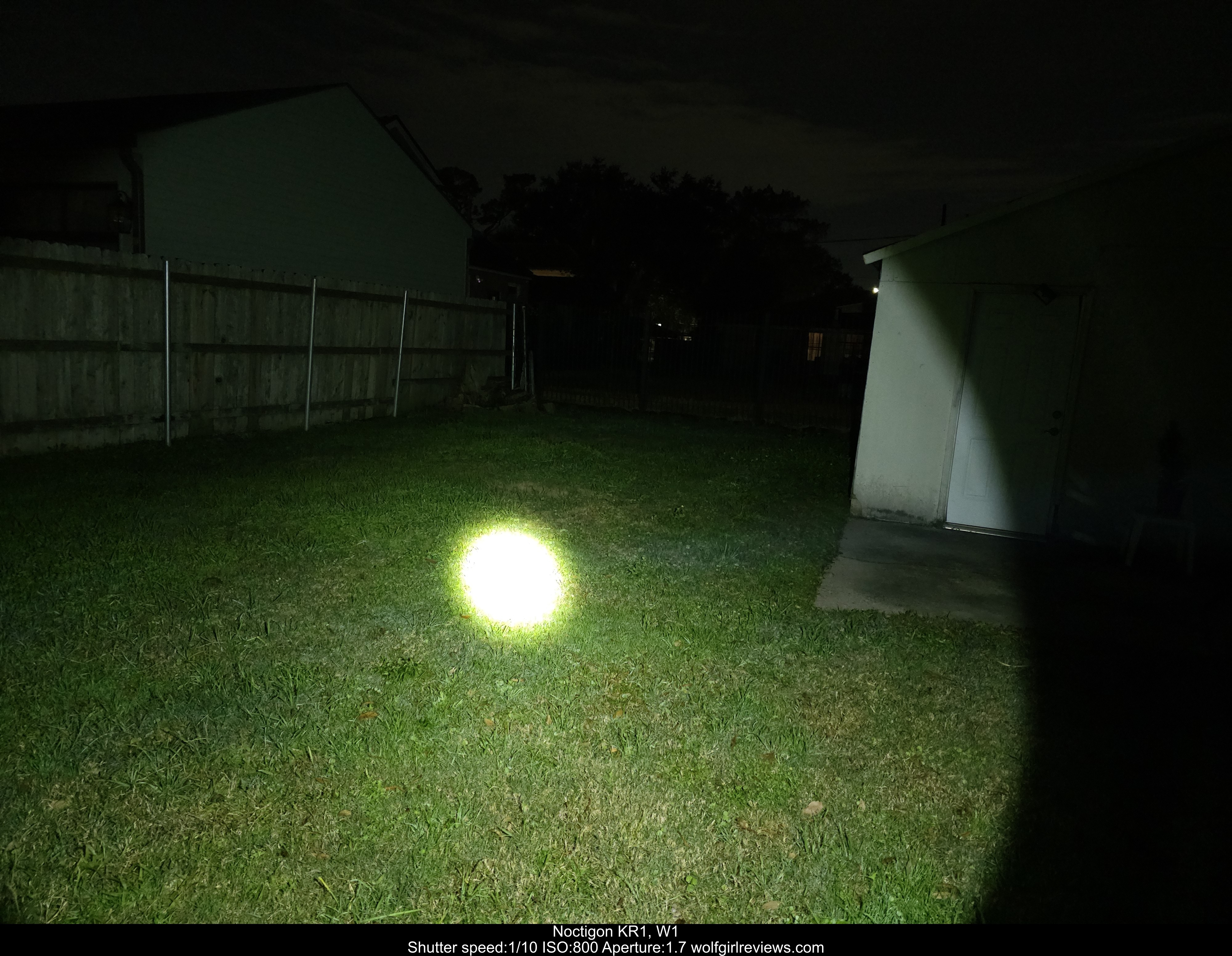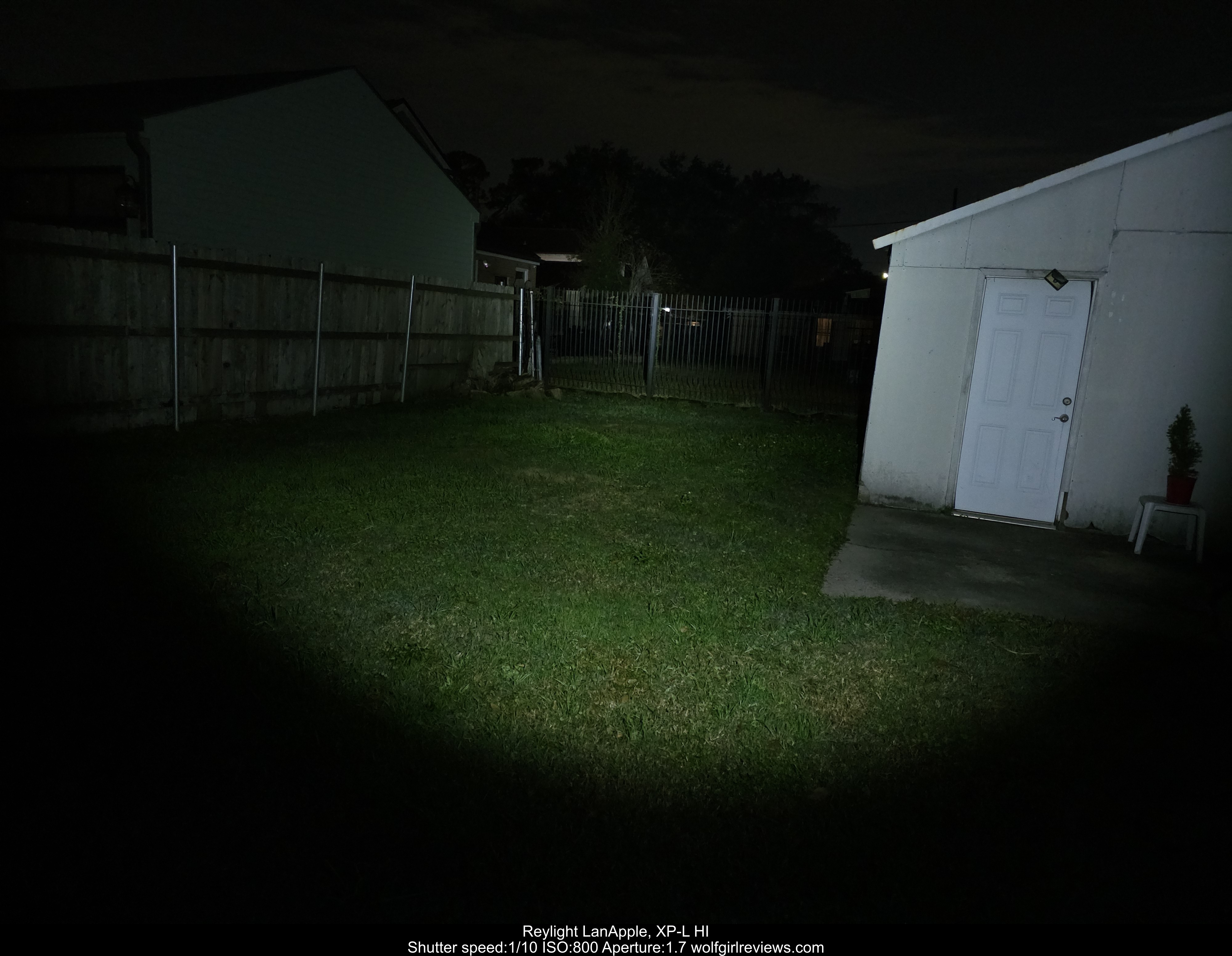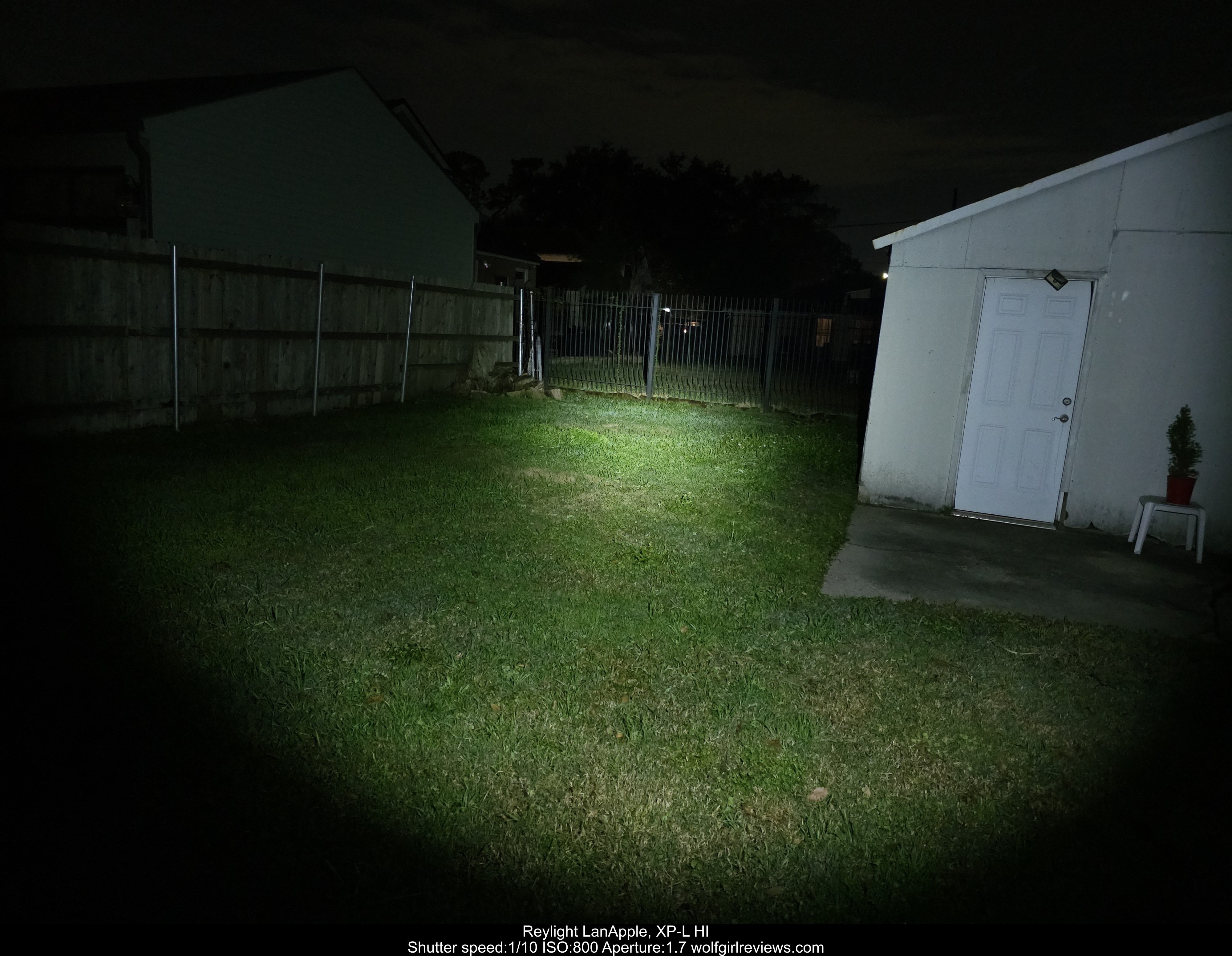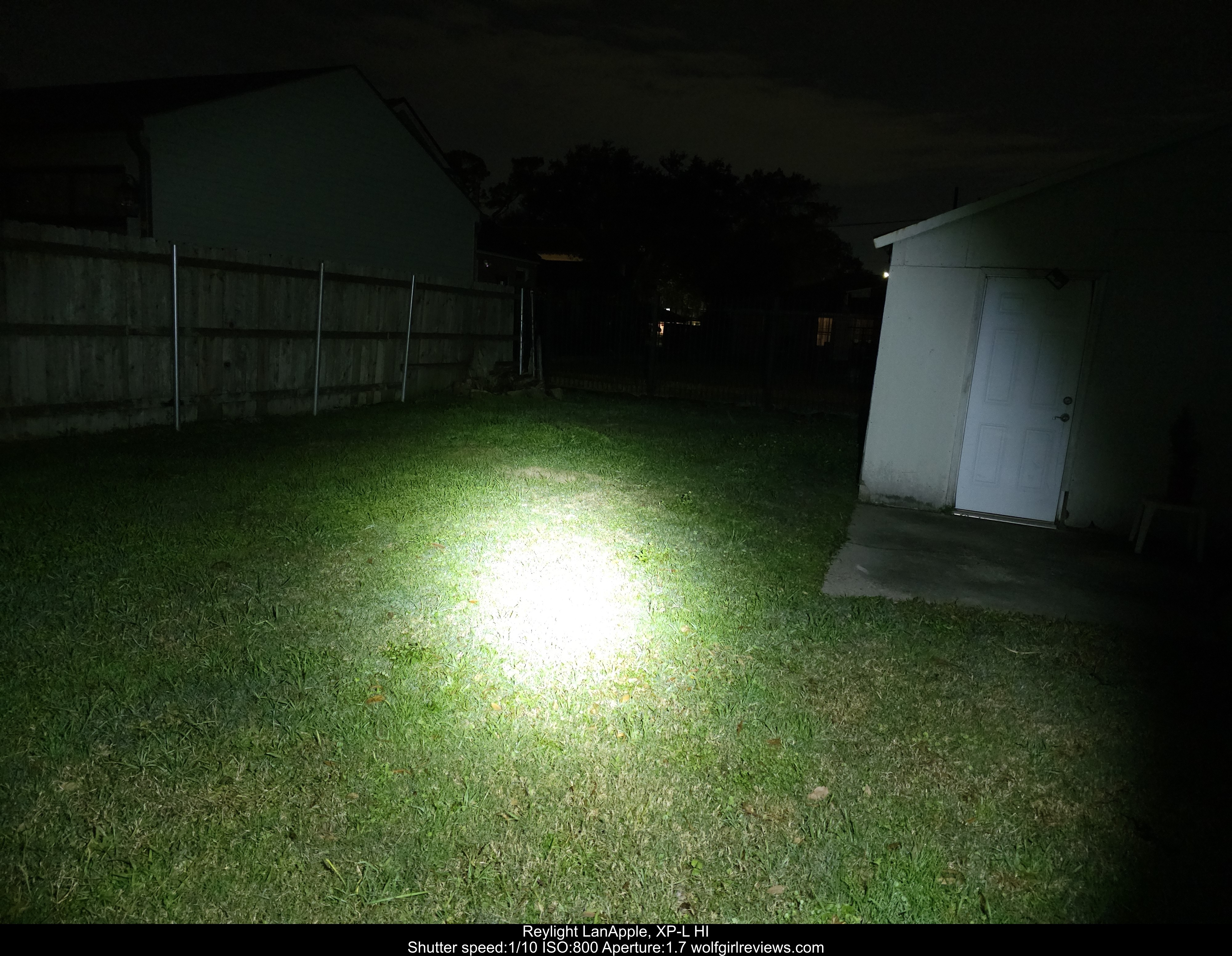"OK, I really need to do do a few reviews of something else after this, this was not planned to be a theme..."
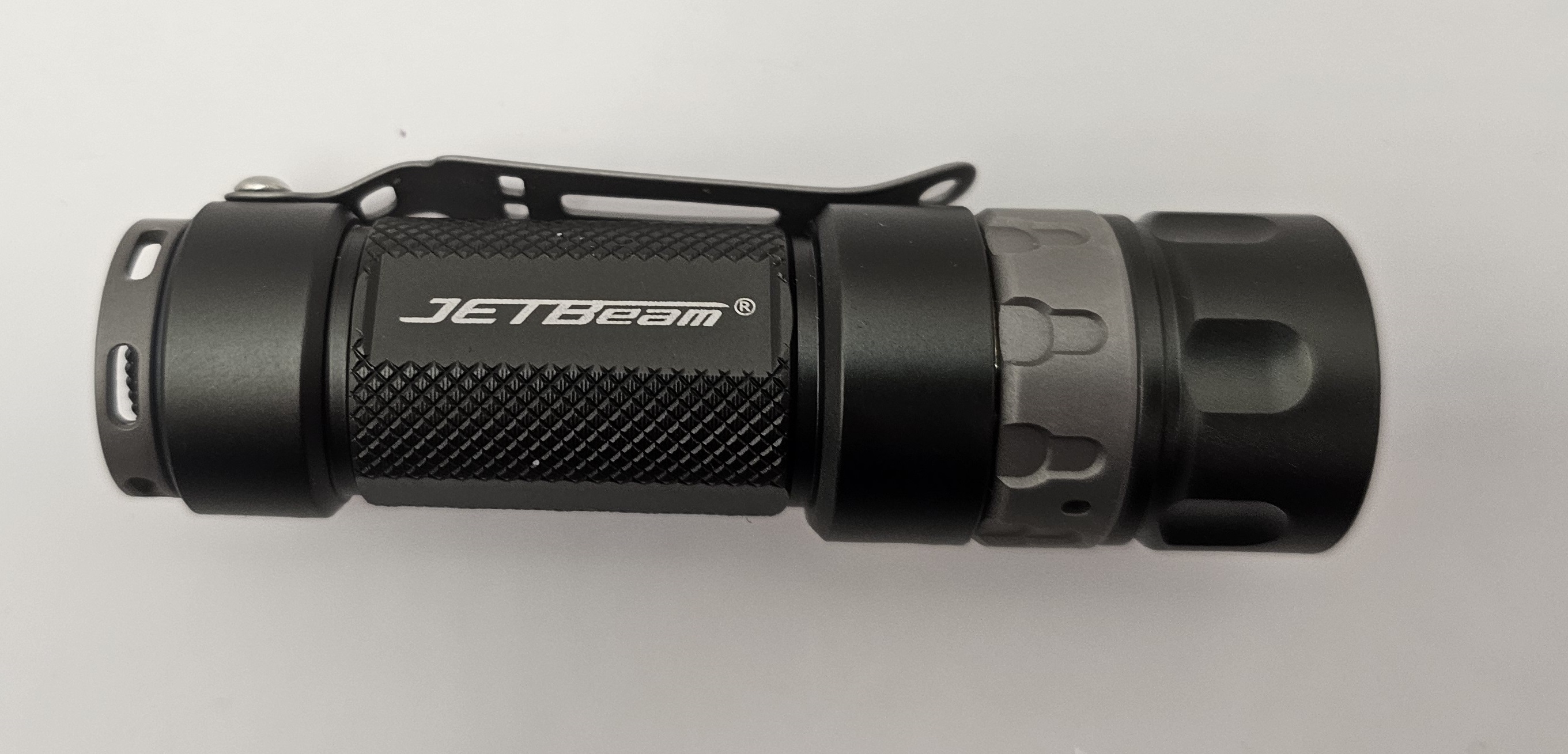 The Jetbeam RRT01 is a small tactical light with rotary control. After receiving the V11R featured in my previous review, I wanted a similar light for myself and got the RRT01 as the closest comparable light. Compared to the V11R, it is a larger and higher performance light that only uses li-ion batteries.
The Jetbeam RRT01 is a small tactical light with rotary control. After receiving the V11R featured in my previous review, I wanted a similar light for myself and got the RRT01 as the closest comparable light. Compared to the V11R, it is a larger and higher performance light that only uses li-ion batteries.
Introduction, Background, and Official Specs
JetBeam have been making rotary control lights for a number of years, and the RRT01 Raptor has gone though several different versions. This is the version available in November 2023, current at the time of writing. The overall design is similar to the V11R, with a rotary control ring near the head and a forward clicky tailswitch. When the V11R got here, I liked it enough that I decided I had to get myself something similar, and had had my eye on this one for a while. The RRT01 has two LED options; a Cree XP-L HI and a Nichia 219C. Contrary to many enthusiasts, I tend to lean towards output and throw over warm CCTs and high CRI, so I got the XP-L HI version; in addition, the 219C version has already been reviewed by 1lumen so it also made sense for me to review the other version.
Official specs:
| Parameter | Official Value | Measured |
|---|---|---|
| Output (18350) | 950 lm | 1,033 lm |
| Runtime (18350) | 50 mins | 45 mins |
| Candela (18350) | 7,200 cd | 9,009 cd |
| Length | 91 mm | 91.2 mm |
| Diameter (head) | 25.7 mm | 26.0 mm |
| Diameter (body) | 24.5 mm | 24.5 mm |
| Weight without battery | 75.2 g | 85.8 g |
| Weight (with JetBeam 18350 battery) | 113.4 g | |
| Length (with two extension tubes) | 116.2 mm | |
| Weight (with two extension tubes, no battery) | 104.8 g | |
| IP rating | IPX8 |
I purchased this light with my own money from a reseller during AE's 11/11 sale. I have not been compensated in any way for this review.
First Impressions, Physical Design, and Build Quality
The RRT01 comes in a cardboard retail-style package, with a spec sheet on the back. Inside, there is a manual, certificate, and warranty card, and included accessories are a lanyard, USB-A to USB-C cable, two spare o-rings and a translucent switch boot that can be used to replace the default black one. Two extension tubes are packaged separately. A protected 18350 battery with USB-C charging is included inside the light.
The light itself is finished in a medium silver-grey matte anodised surface, which has a very slightly rough feel that helps the light feel easy to grip in the hand without being excessively rough. The pocket clip is fixed to the body with two small hex screws, and thin but relatively stiff, although not too stuff to easily lift with one finger. The middle of the battery tube is inset slightly, with medium-coarseness diamond knurling for grip and two flattened spots, one with the JetBeam logo and one with the model and serial number. Overall this is a tube-syle light, and the bezel and tailcap are the same diameter, with an inset area in the middle of the battery tube where the knurling is. The head can be removed to insert the battery, and there is no obvious method to open the tailcap. The control ring, clip, and tailswitch surround are made of stainless steel and finished in a lighter contrasting finish that is possibly bead-blasted and contrasts the darker surface well and makes the light more visually interesting, as well as making the location and implied function of the control ring obvious, although this does seem to have a tendency to wear more easily than the rest of the body, developing several small marks with light use through testing and being gently carried over 2 or 3 days.
The switch is a forward-clicky tailswitch with a raised surround, and can be operated with the thumb in a reverse grip relatively easily, although depending on the size of your hands, the raised surround makes it slightly more difficult to press the switch to a full click. There are six lanyard holes around the tailswitch surround, and two more on the clip, allowing a lanyard to be installed without affecting the ability to tailstand, although the switch does make tailstanding slightly difficult when the light is off - not impossible, but it will lean to one side due to the raised middle of the switch. When the light is switched on, it will tailstand fine, so is still usable for lighting a room. The brightness control ring is wide, with cutout indentations that make it much easier to rotate with a single finger or thumb than the Sunwayman V11R. The ring rotates freely and smoothly with no steps until either end, where there is a detent for maximum brightness and another at the opposite end to switch the light off. There is a small hole at one point in the ring which serves as a marker to index the position of the ring, as there are no other markings on either the ring itself or the body, although as the clip is fixed in place, it does serve as a point of orientation. One downside of the clip is that without the extension tube fitted, depending on how you hold the light, your finger or thumb can hit the clip, blocking the rotation. This is my least favourite thing about the design, but the clip is removable, and there are alternate clips known to work (discussion here). I replaced the clip on mine with a clip from Oveready, which is short enough to no longer block my thumb on the control ring.
The extension tubes screw in smoothly and feel relatively tight, requiring a lot more force to start unscrewing them than is needed to adjust the brightness (a weakness of the Sunwayman V11R I previously reviewed, where adjusting the brightness with the extension tube fitted tended to cause them to disconnect), so there are no problems with accidentally locking the light out like the V11R. Fitting at least one extension tube (for 18500 or 18650) also has the effect of preventing the clip from blocking the ring's rotation. However, the extension tubes do not fit the overall theme of the light, with spiral knurling instead of the diamond pattern found elsewhere on the light. In my opinion, this does not match well with the smooth portion of the battery tube before the extension tube, and is also inconsistent in depth and spacing with the body tube. It looks and feels almost like the extension tube has been improvised from another light rather than being something designed specifically as a component of the RRT01.
Size Comparison
I took comparison photos of the RRT01 Raptor as well as several other small to medium EDC sized tailswitch lights for scale.
- Jetbeam RRT01 Raptor
- Sunwayman V11R
- Acebeam Tac AA 519A-V1 5000k
- Acebeam Rider RX 2.0 Ti 519A-V1 5000k
- Convoy S2+ W1 6000k
- Noctigon KR4 519A 4500k
- Noctigon KR1 W1 6000k
- Reylight LanApple XP-L HI 6000k
With extension tubes (1x and 2x)
Without extension tube
User Interface
Rotation directions are given with the light facing away from the user.
| State | Action | Effect |
|---|---|---|
| Off | Half-press | Momentary on |
| Off | Click | On |
| On | Click | Off |
| (n/a) | (rotate ring) | Brightness adjustment (anticlockwise dimmer, clockwise brighter) |
| On | Rotate brightness ring to maximum twice in a row quickly (back after each time) | Strobe |
| On | Rotate to maximum 3 times in a row, as above | SOS |
| On | Rotate brightness ring to off position | Soft off; cancel strobe/SOS |
| On, soft off | Rotate brightness ring clockwise | On |
There is no lockout mode, and mechanical lockout is impossible since the threads of both the head and the body/extension tubes are conductive (brass for the head and aluminium for the tubes). In general, I did not feel any need for a lockout mode as the initial press on the switch is firm enough to prevent accidental activation in a pocket, particularly with the raised surround. There is no low voltage warning, other than output reducing. Brightness is controlled through the control ring; rotating all the way anticlockwise will hit a detent and switch the light off, although this detent is way too light to make this a reasonable way to carry the light (plus you get battery drain from the driver this way compared to none when using the tailswitch).
Notably, from off I needed to rotate the ring about halfway along its range of travel before the light came on again; there is definitely an extended dead zone for around the first 45 degrees of rotation where the LED did not light up. When turning the light down, there is much finer control than when turning it up, and I can get much closer to the off detent before the light from the emitter becomes invisible. The actual lowest brightness is extremely low, on par with the lowest achievable output light I own (Fireflylite NOV-Mu), and while I have no way of measuring such low outputs, my guess would be that it is easily below 0.1lm.
Interestingly for a rotary light, there is in fact a strobe and blinky (SOS) mode. As described above, when the light is on, rotate the control ring to maximum, then back it off slightly and back to maximum. Doing this twice will activate strobe, and 3 times for an SOS mode. Overall, I found the timeout reasonable and rarely accidentally activated either while just playing with the light, although I do find it easier to accidentally activate strobe instead of SOS, but in general I find SOS modes a fairly pointless addition anyway, and think that an Anduril-style beacon mode would have been better here (maybe with the ring controlling the blink rate?). In either strobe or SOS mode, the ring still controls brightness, and if the ring is set back to the off position, the strobe resets back to normal mode, as also happens if the light is switched off using the tailswitch. There is no battery check mode or low battery warning other than the light reducing in output.
Driver and Emitters
Note that the RRT01 does not have any LVP, and will overdischarge a battery is you let it. Although it shipped with a protected battery included, there was no warning either in the user manual or packaged with the light indicating that only protected batteries should be used. Unprotected button tops can be used with caution and will work, but in general I would recommend against this.
The driver appears to be a linear driver when using li-ion batteries, as output drops with battery voltage. There is also active thermal management, as when performing extended runtime tests, the output would occasionally step up by around 10-20lm before dropping again, presumably due to a fluctuation in temperature bringing it below the thermal target level. When running from maximum, the light got warm in my hand but never too hot to hold.
The RRT01 also supports CR123A batteries, so the driver also has a boost circuit for these. During runtime tests, I noticed around 3.1-3.0V there was a small increase in output, which would be where the driver switches to the boost circuit, although when testing with the smaller batteries this was almost immediately followed by the battery's protection circuit cutting off. Since there is clearly some form of microcontroller in use as evidenced by the strobe mode and active thermal management, it would have been nice if it could remember what voltage the battery was at when the light was switched on, and shut the light off once battery voltage became too low if it started above typical CR123A voltage - obviously, this would not be foolproof, but would at least prevent most accidental overdischarges.
The emitter is a Cree XP-L HI in cool white (I measured from around 6500k at moon to around 9000k on maximum output, with a setting of appriximately 50% perceptual brightness coming out to around 6600k). DUV was negative at all levels, with an increasing negative bias as output and CCT increased. Whether this will satisfy the people on /r/flashlight who seem to want DUV to be as negative as possible or not is yet to be seen, but personally I found the tint nice even at maximum output.
The emitter is in a smooth reflector and my example was perfectly centred with no dust or other debris inside the optics. Overall, the beam pattern is relatively throwy considering the narrow head, due to the high intensity emitter and smooth reflector. The beam is even with no artifacts and very little tint shift, and one very faint ring outside the reflector's spill, which is difficult to notice in real-world use. As mentioned earlier, the RRT01 is also available with a Nichia 219C, which appears from other reviews to be in the 4000-4500k range, and comes with an orange peel reflector.
I measured the LED's CCT and CRI with a Colormunki Photo and ArgyllCMS, as well as an Opple Light Master 3 and 4 to provide a comparison point for users of these meters.
CRI and tint: Maximum
CRI and tint: 50%
CRI and tint: Minimum
Power and Charging
Unlike the Sunwayman V11R I recently reviewed (I really need to review some different lights, I guess, before this becomes the site's niche...), the RRT01 only uses li-ion batteries. Without the extension tubes, it takes 18350, and my light arrived with a protected 18350 with USB-C built in; standard flat top cells do not work in this light as the driver uses a physical reverse polarity protection ring. With a single extension tube, 18500 are supported, and 18650 with two extension tubes fitted - again, only button top batteries work as flat tops are not able to contact the driver.
There is no built in charging, although the included battery has a USB port and charged successfully for me from both A-C and C-C cables.
Moddability
The bezel has indentations that could be used with a tool to open it, so an emitter swap is likely possible, while the actual driver is probably very complex to disassemble. The pocket clip can be removed with two screws, so could be replaced by a shorter one if you find it interferes with the control ring when using the light with an 18350 battery.
Performance
All lumen measurements taken using a 4.5 inch Texas Ace lumen tube. Candela measurements were performed indoors at a distance of 1m, using a UNI-T UT383BT.
Runtime tests were performed using the lumen tube's HS1010A luxmeter, which the tube is calibrated for, with data recorded via taking a video, exporting the individual frames using ffmpeg, and parsing the value on the luxmeter's display at the appropriate frame for each measurement. This method is essentially automated manual work, so I reduced the data interval over time. I logged the value every second for the first 90 seconds, then every 5 seconds up to 5 minutes, then every 30 seconds afterwards. For the 18350 tests, I used the supplied USB-C 18350 battery (rated 1100mAh); for 18500, a protected KeePower P1850J2 (2300mAh); and for 18650, a protected Samsung 30Q (3000mAh).
Specs
Official output spec is 950 lm and candela is 7200 cd. The battery type for these is not specified other than being li-ion, but these could safely be assumed to be with the included 18350 battery. In addition, JetBeam provide an output spec for a CR123A battery of 420lm. Runtime is specified as 50 minutes with the included 18350 battery. Strangely, official specs also provide a rated throw distance of 220m - as 7200 cd is equivalent only to 169 m, I am not sure where this figure comes from, so I am going to ignore it for comparison purposes.
| Measurement | Spec | Measured |
|---|---|---|
| 18350, maximum | 950 lm; 50 mins; 7,200 cd | 1033 lm (108.7% of spec), 45 min (90% of spec) |
| CR123A, maximum | 420lm, 1.5h | (not tested) |
| 18500, maximum | (not specified) | 1051 lm (110.6% of spec), 1 hour 5 min |
| 18650, maximum | (not specified) | 1,139 lm (119.9% of spec), 1 hour 40 min |
Output and Throw
| Light | Peak output | Output after 30s | Output after 1 minute | Output after 90s | Output after 5 minutes | Output after 15 minutes |
|---|---|---|---|---|---|---|
| Jetbeam RRT01 (18350, 1100mAh) | 1,033 lm (108.7% of spec) | 814 lm | 779 lm | 753 lm | 658 lm | 538 lm |
| Jetbeam RRT01 (18500, 2300mAh) | 1,051 lm (110.6% of 18350 spec) | 839 lm | 792 lm | 750 lm | 672 lm | 567 lm |
| Jetbeam RRT01 (18650, 3000mAh) | 1,139 lm (119.9% of 18350 spec) | 906 lm | 842 lm | 812 lm | 743 lm | 658 lm |
| Light | Peak candela | Candela after 30s | Candela after 1 minute |
|---|---|---|---|
| Jetbeam RRT01 (18350, 1100mAh) | 9,018 cd (189.8 m) | 7,245 cd (170.2 m) | 6,930 cd (166.5 m) |
| Jetbeam RRT01 (18500, 2200mAh) | 10,503 cd (204.9 m) | 8,685 cd (186.4 m) | 8,280 cd (182.0 m) |
| Jetbeam RRT01 (18650, 3000mAh) | 11,358 cd (213.1 m) | 9,360 cd (190.4 m) | 8,631 cd (185.8 m) |
Runtime
| Light | Runtime |
|---|---|
| Jetbeam RRT01 (18650) | 1 hour 40 min |
| Jetbeam RRT01 (18500) | 1 hour 5 min |
| Jetbeam RRT01 (18350) | 45 min (90% of spec) |
Overall, the RRT01 exceeds its published spec on output and comes close on runtime (I would guess that if manually adjusted to ~950lm, it would match or slightly beat the runtime spec). Note that due to the lack of any LVP in this driver, I only tested with protected batteries, so exact runtime will vary based on where the battery cuts off. After each runtime test, the battery voltages were as follows:
| Battery | Voltage |
|---|---|
| Samsung 30Q protected | 3.1V |
| KeePower P1850J2 protected | 2.55V |
| JetBeam 18350 protected | 3.0V |
In the runtime graphs, there is a visible increase in brightness when the driver switches form the linear circuit to the boost circuit, which appears to happen at or slightly above 3.0V, as in each case except the 30Q, the switch comes only a very short time before the protection circuit disconnects power. In the case of the 30Q, the final voltage was 3.1V, possibly indicating the protection circuit tripped due to a lower actual voltage under load compared to the open circuit voltage as tested afterwards.
Beamshots
Lights used:
- Jetbeam RRT01 Raptor
- Sunwayman V11R
- Acebeam Tac AA 519A-V1 5000k
- Acebeam Rider RX 2.0 Ti 519A-V1 5000k
- Convoy S2+ W1 6000k
- Noctigon KR4 519A 4500k
- Noctigon KR1 W1 6000k
- Reylight LanApple XP-L HI 6000k
Competitors
Rotary interfaces are relatively rare, and the RRT01 is in general the go-to recommendation for one available today with smooth adjustment. The Sunwayman V11R is a discontinued light with a similar interface, although lower performance and in general much harder to obtain.
Although it lacks the physical control interface, any anduril light offers smooth brightness adjustment. In this review, I used a Noctigon KR4 and KR1 for comparison due to being roughly similar in size (although wider and heavier) and having a tailswitch, but there are many other possible choices.
Final Thoughts and Score
| Category | Score | Comments |
|---|---|---|
| Looks | 7/10 | Without the extension tubes, I really like the look of the RRT01. In general, the design has a slight "tactical" look and feel, but without being excessive. The extension tubes do detract from the overall look of the light in my opinion, as they do not match anything else on the body. |
| Quality | 7/10 | The build quality feels solid, the rotary control ring rotates freely without being too easy to accidentally move. The pocket clip is stiff and springy without being overly tough to lift to clip/unclip, and should hold up well to being carried. However, the pocket clip is in my opinion too long, and would be greatly improved by being around 5mm shorter so it doesn't interfere with the control ring. |
| User interface | 7/10 | The rotary control is of course going to be the big point as to whether you like the UI or not. Other than the issue with the pocket clip when not using the extension tubes, the RRT01 is easy to use, and I appreciate the inclusion of a strobe mode given the overall design direction of the light, although the included SOS mode is useless and in general I would have preferred either a beacon mode or a battery check mode instead. If, like me, you use this light more as a toy than a serious EDC or tactical light, it is possible to accidentally enter strobe, but once I did this a couple of times it was relatively easy to avoid without impacting enjoyment, and if you do enter strobe mode it is easy to exit without having to switch the whole light off (which would generally mean adjusting your grip). |
| Performance (absolute) | 8/10 | ~1000lm is an excellent peak output for a single emitter light using relatively low-drain batteries, although thermal stepdown is relatively quick, the light definitely shows signs of relatively active thermal management, attempting to increase output again as soon as temperature falls below a threshold, and the head design with the control ring is always going to be an inherent performance limitation by reducing thermal conductivity and mass. |
| Performance (sustained) | 6/10 | Sustained performance and runtime are reasonable, particularly for a linear driver, but nothing special. The lack of useful LVP means that protected batteries should be used which loses some runtime compared to if it had proper LVP that engaged at a safe voltage such as 2.8 or 2.9V. |
| Moddability | 4/10 | An emitter swap may be possible, but otherwise modding potential is low - the switch boot can be swapped but further disassembly seems very difficult. |
| Practicality | 6/10 | Despite lacking LVP, with a protected battery runtimes are still reasonable for general light EDC use. The rotary interface partly offsets this by allowing very fine control over output. In general, the RRT01 is light and easy to carry, although I found the stock pocket clip very annoying when using it in 18350 configuration. |
| Value | 6/10 | If you're buying this, it's for the interface - there are lights at each battery size the RRT01 supports with better absolute and sustained performance, but for the level of engineering effort that has clearly gone into this light, the overall price is fair. |
| Fun | 8/10 | The control ring's stiffness feels perfect to me, rotating freely and smoothly without being either too loose or too stiff. As previously mentioned, it is possible for an unsuspecting user to accidentally enter strobe mode, although once aware of it, it is easy to avoid. All the surface finishes feel very nice in the hand, and the tailswitch has a very satisfying tactile click. |
| Overall | 7/10 | If you're looking for a rotary light that is available to purchase new, there are relatively few options, and this is one of the only ones with completely smooth infinitely variable control rather than stepped. Performance is excellent given the size and compromises necessary for the design, although the lack of LVP when using li-ion batteries is a significant negative. |
JetBeam do not seem to have any official direct sales channel, but the RRT01 is available from multiple resellers on AliExpress, or from Illumn for a US-based reseller. The official product page can be found here. I was not able to find any retailers currently stocking the 219C version.
Sorry this review took me so long, had a lot of external problems that were demanding on my time, in addition to a few other projects, but have also taken some of the time to improve some of my data gathering processes, so hopefully waits for subsequent reviews should be shorter. Still interested in any feedback - I am active on BLF or Reddit, both on /r/flashlight and other specific subreddits, and have started my own subreddit for review content at /r/WolfgirlReviews. In particular, I would be interested in people's thoughts about size comparisons - am I providing enough common points of reference, or is there a specific popular light I should include to provide one?
>> Home